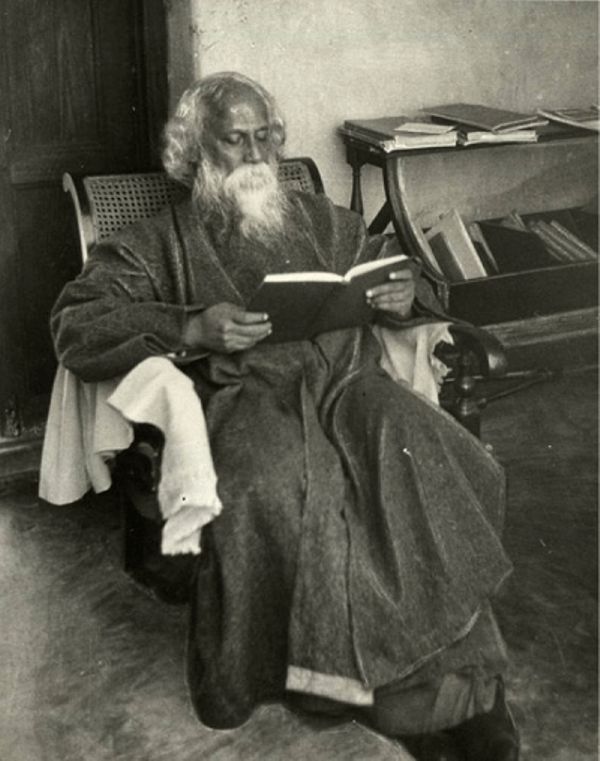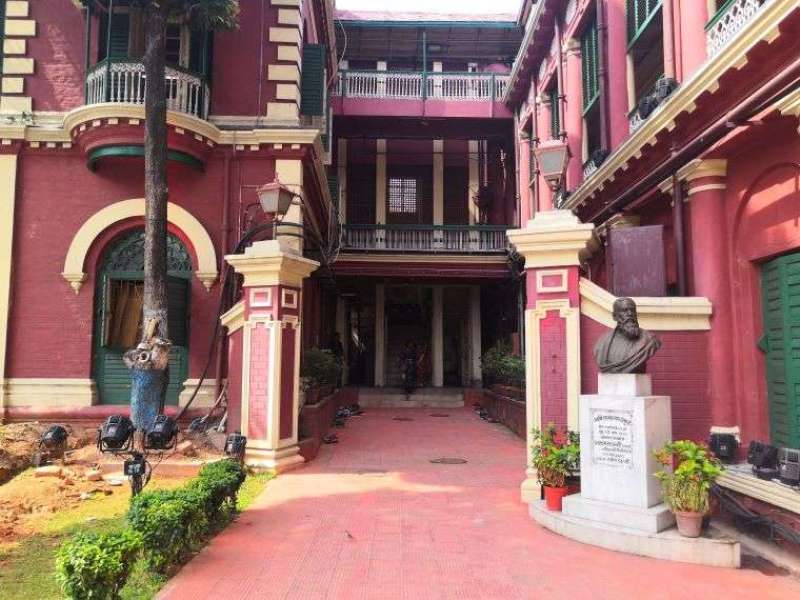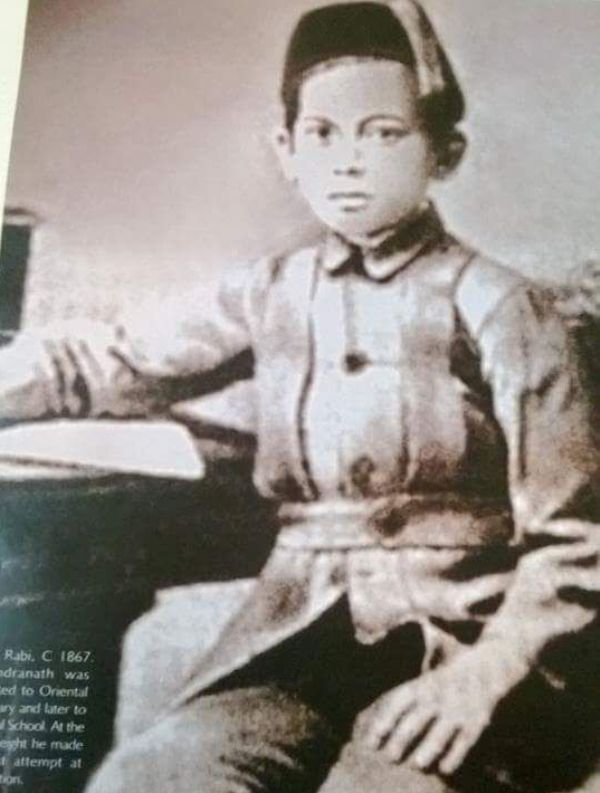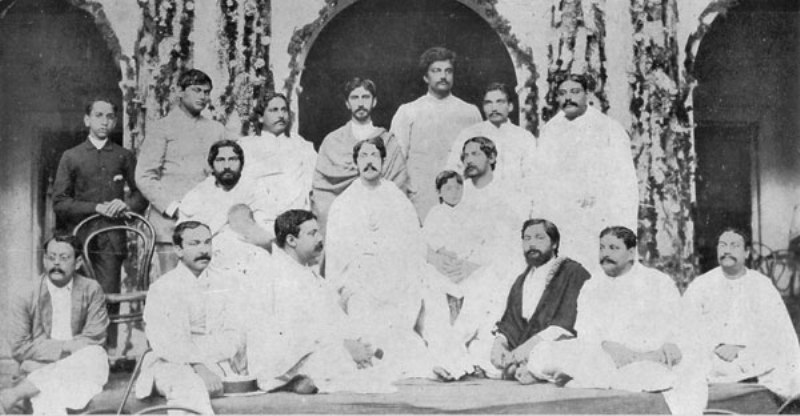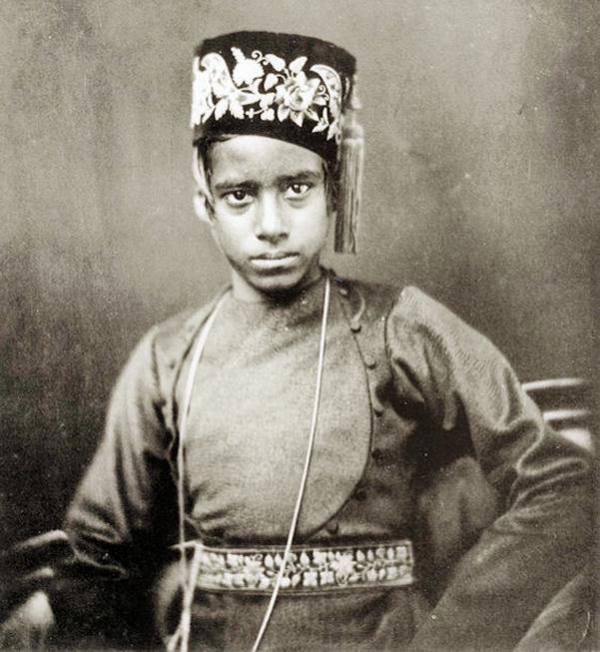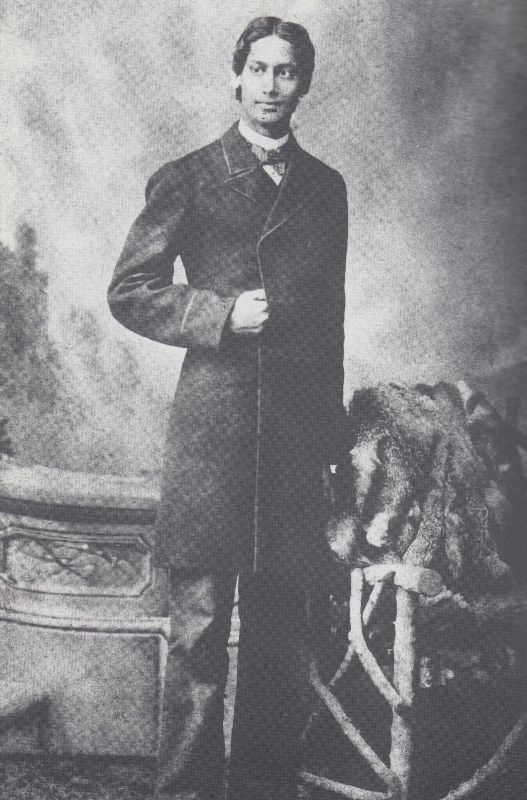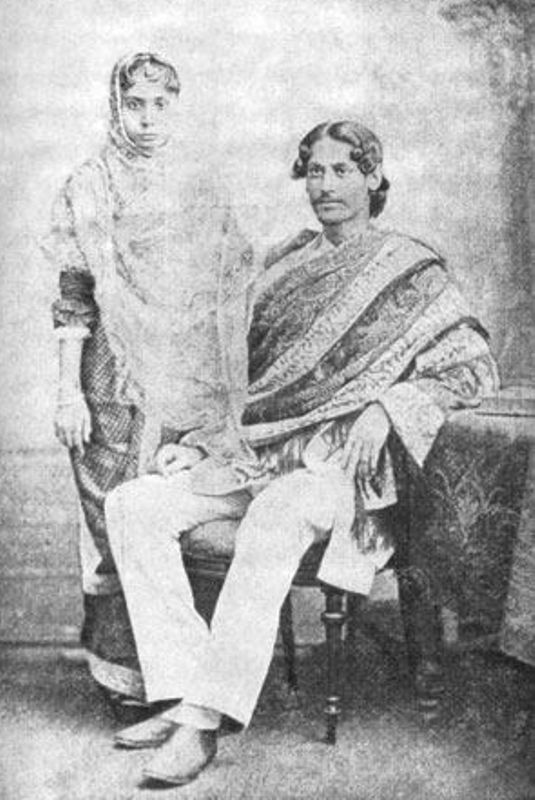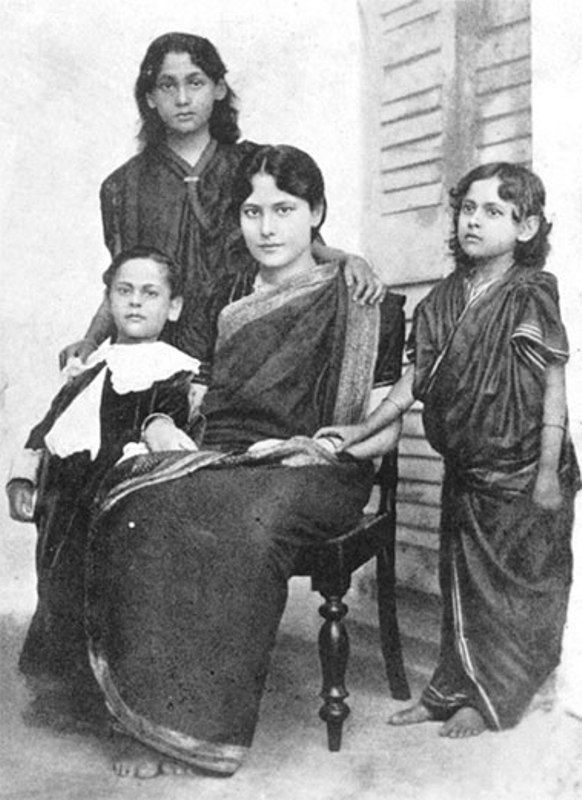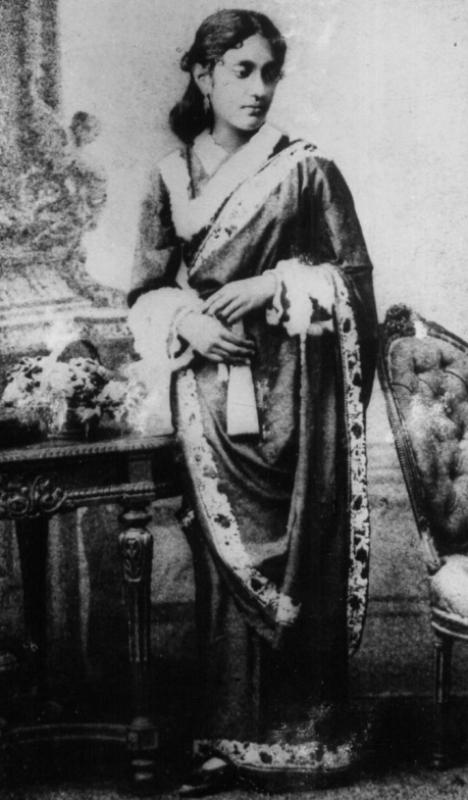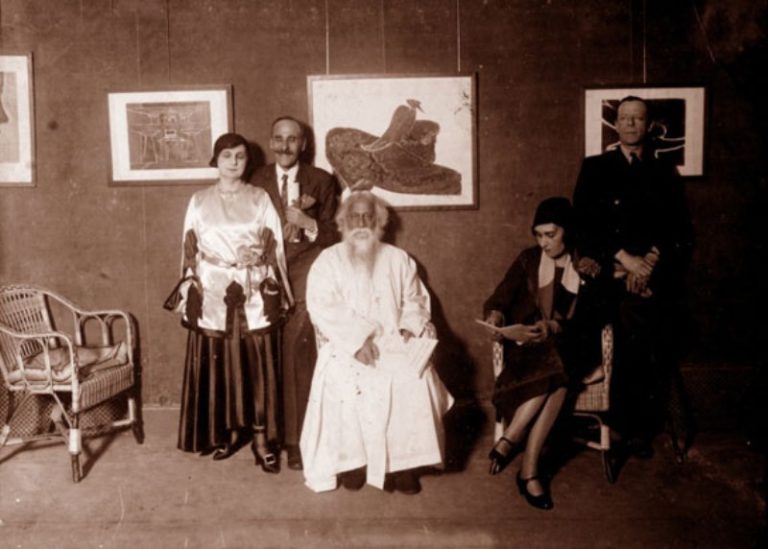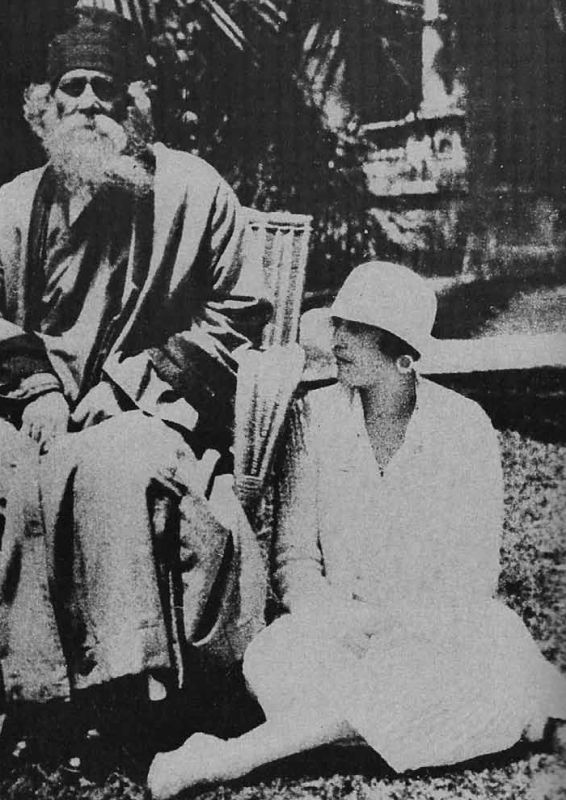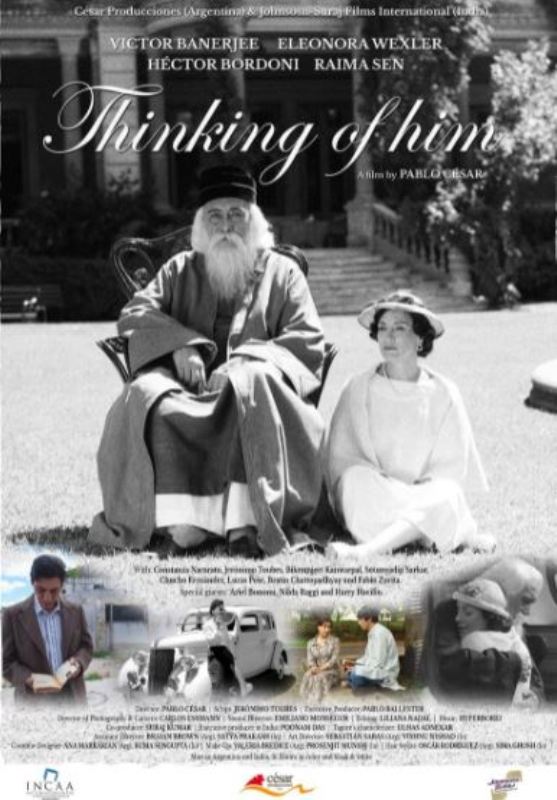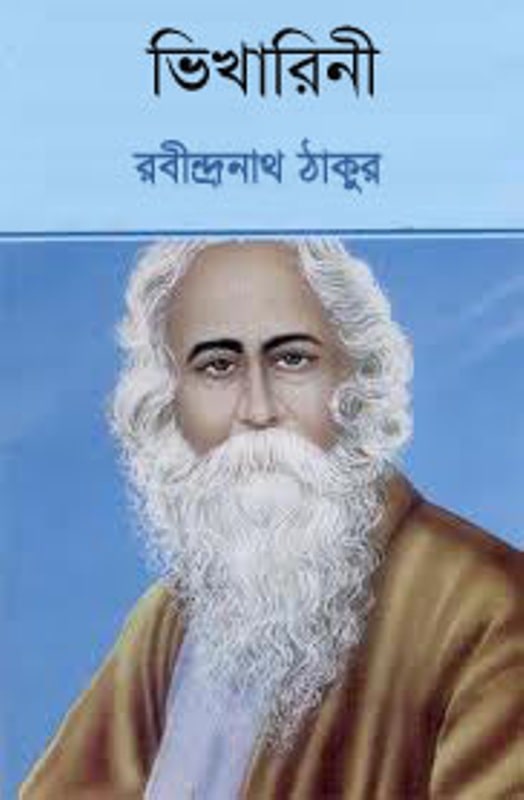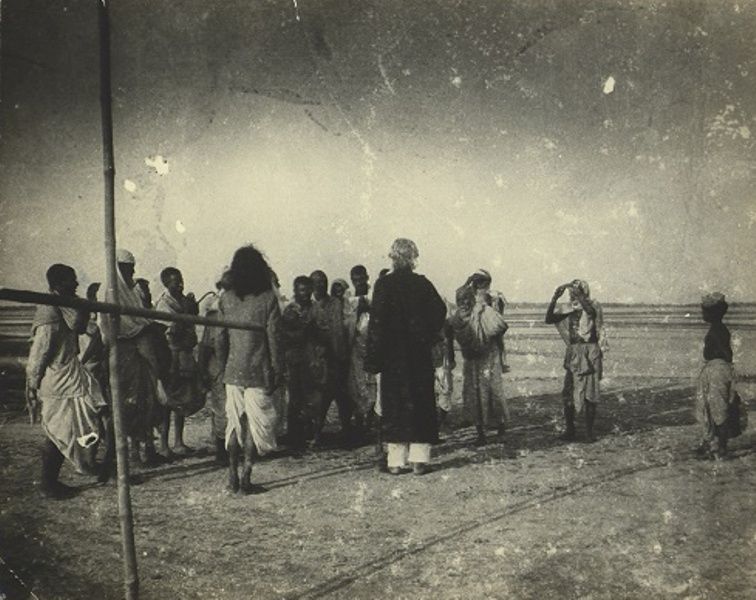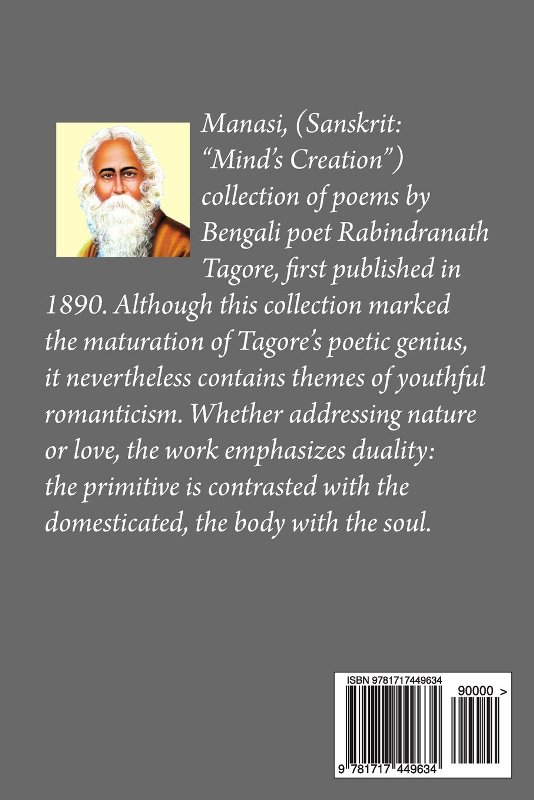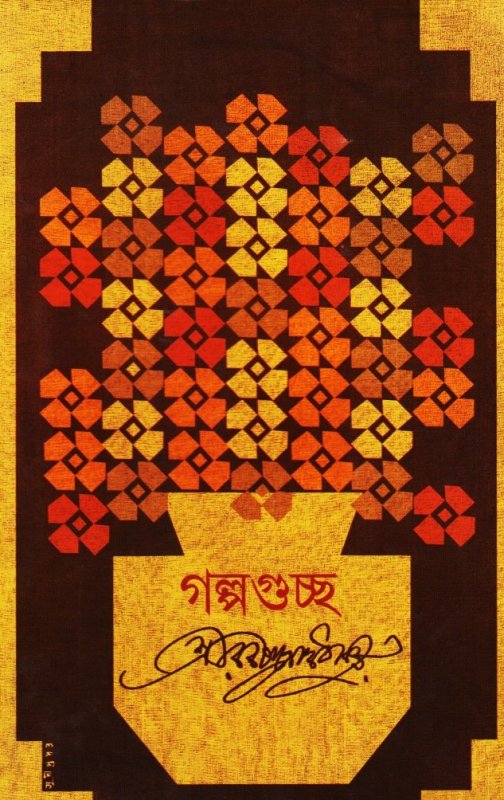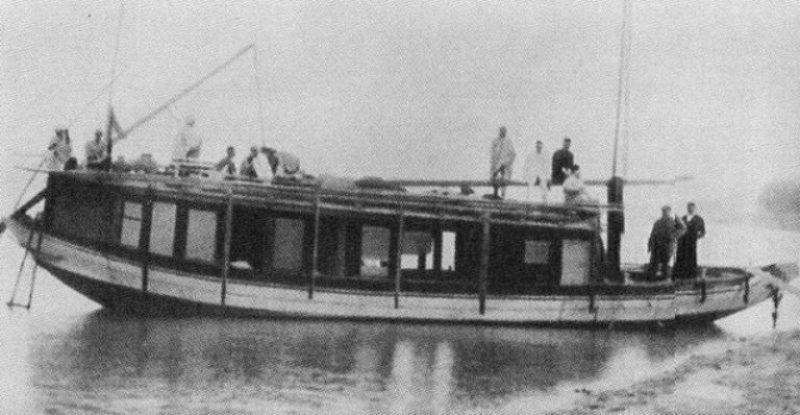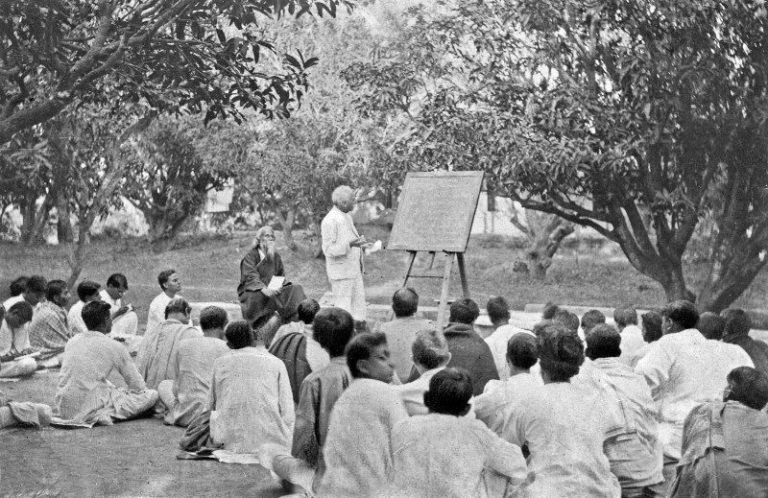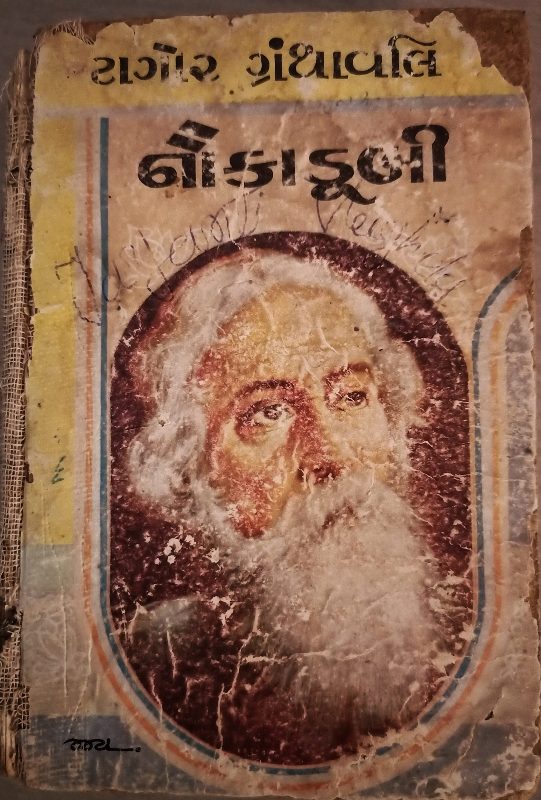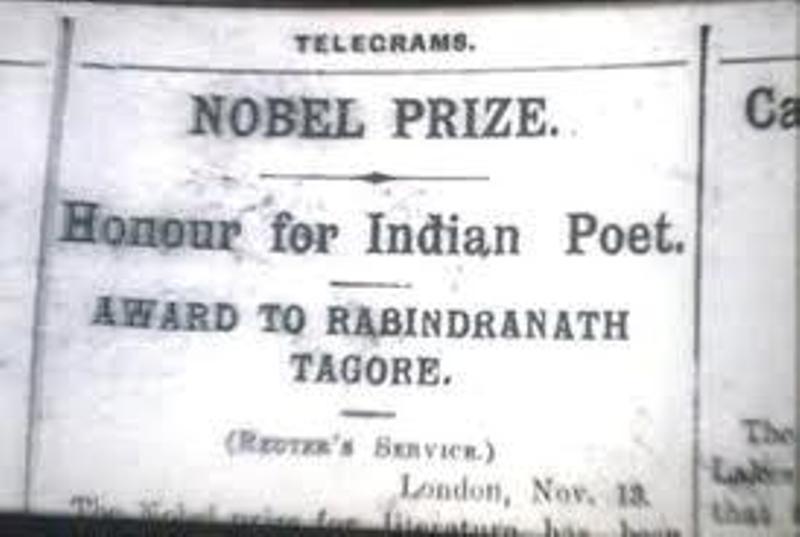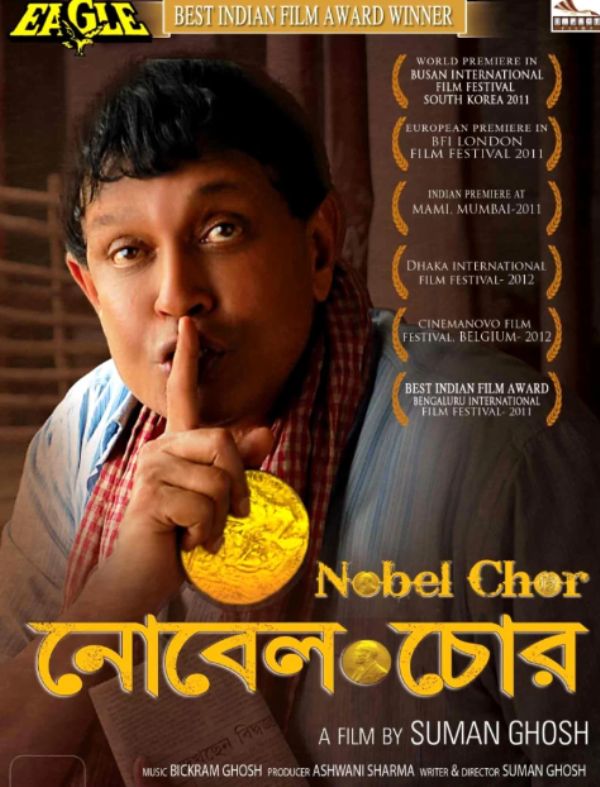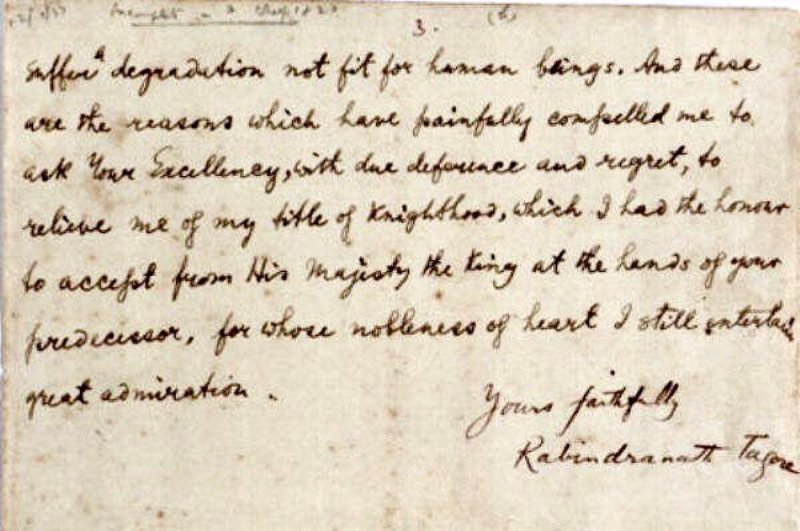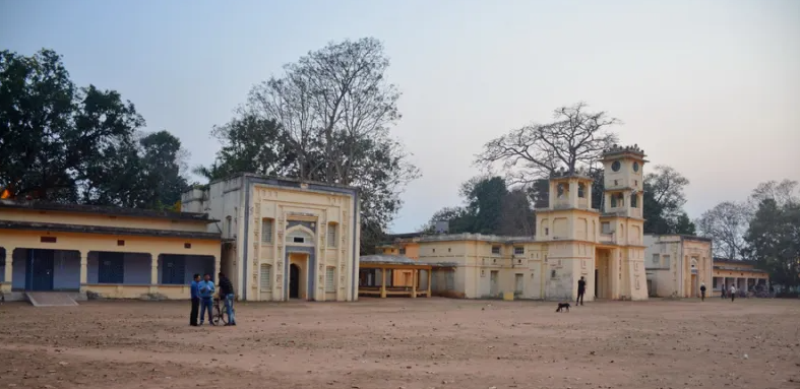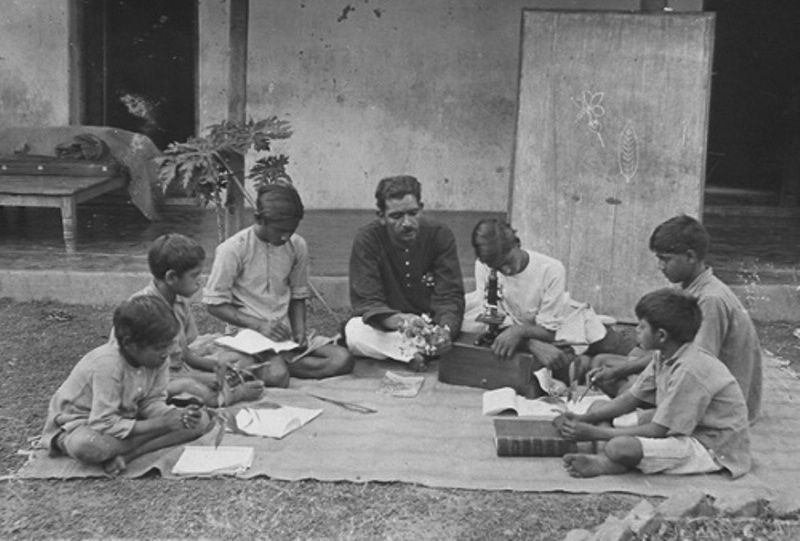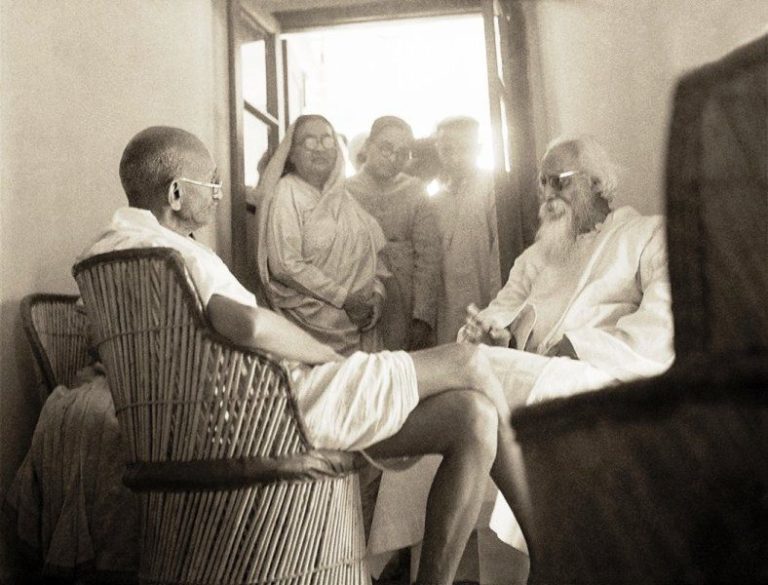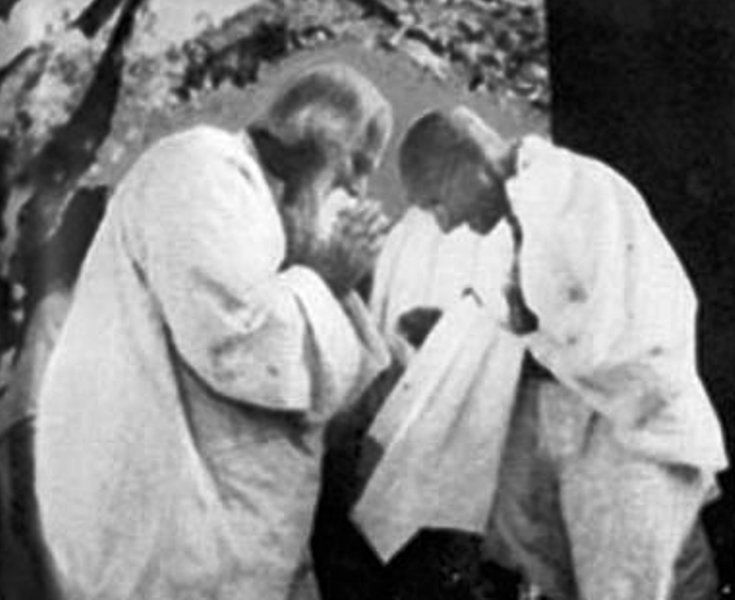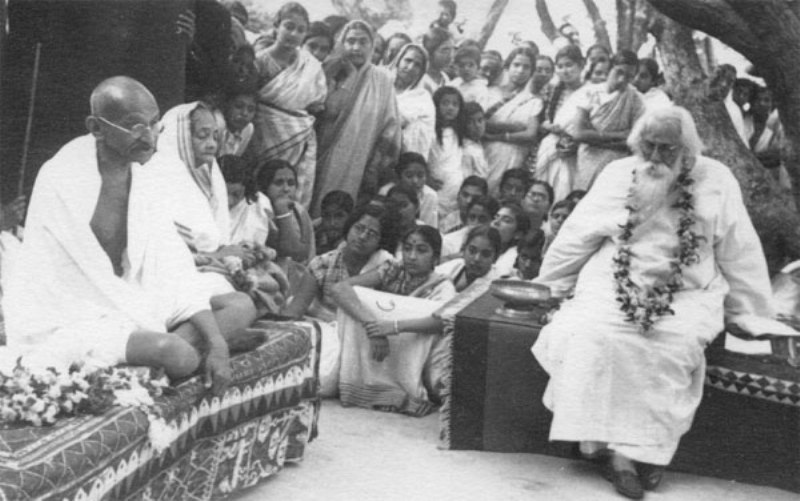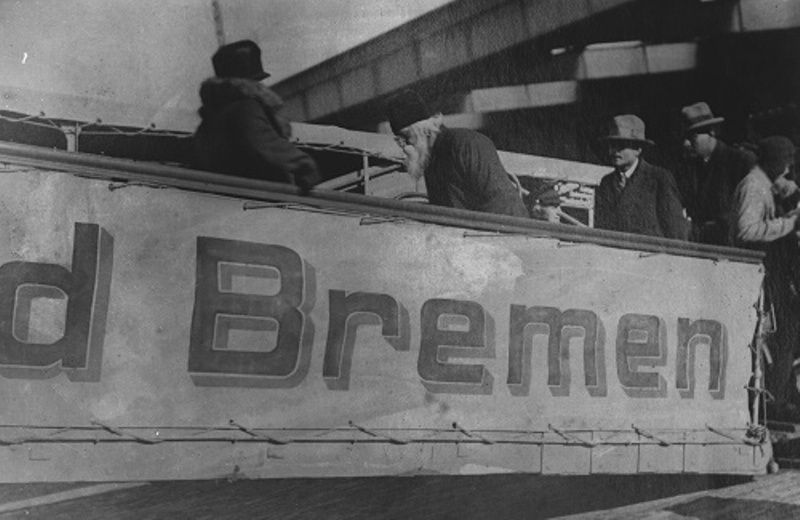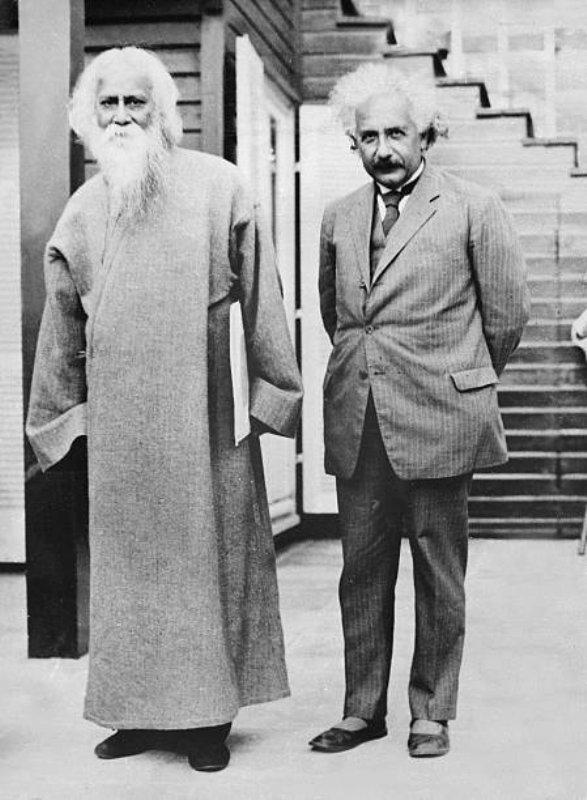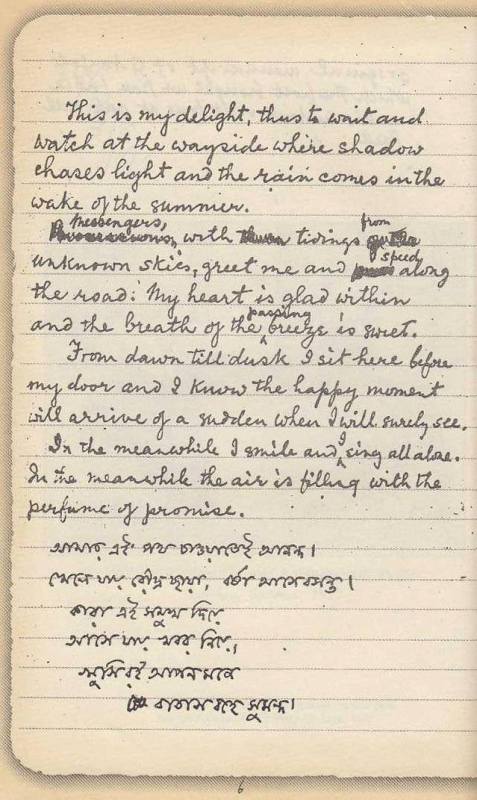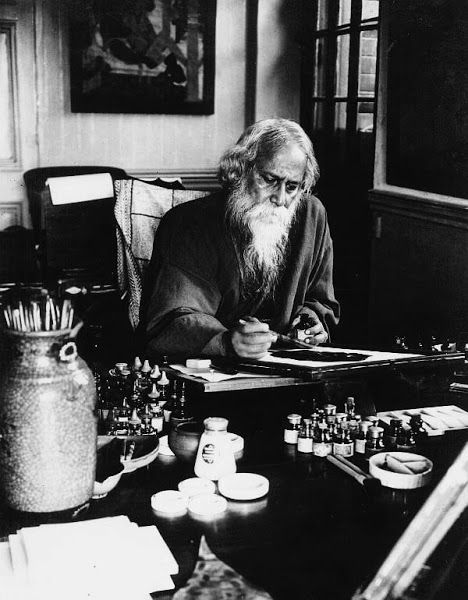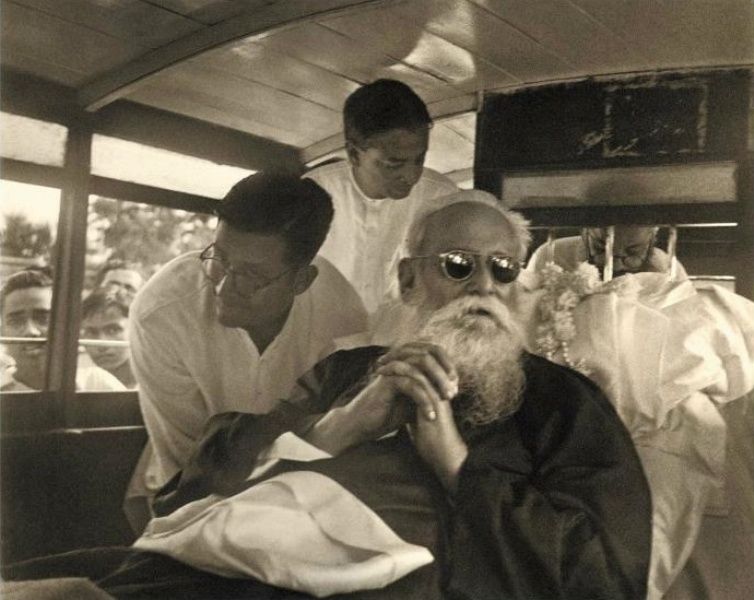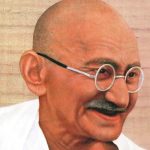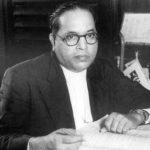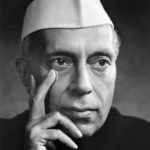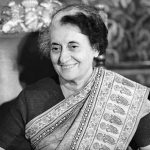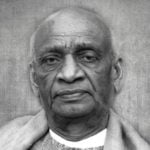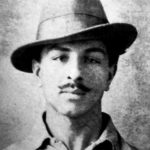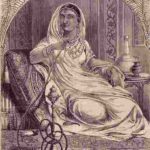Rabindranath Tagore Age, Death, Wife, Children, Family, Biography
| Bio/Wiki | |
|---|---|
| Birth name | Robindronath Thakur [1]Colloquial Bengali By Mithun B. Nasrin, W.A.M Van Der Wurff |
| Names earned | • Bard of Bengal [2]BBC • Gurudev (called by Mahatma Gandhi) [3]ServiceSpace • Kavi Guru [4]PIB • Biswakabi [5]Hindustan Times |
| Nickname | Rabi [6]University of Malta |
| Pen name | Bhanusimha (until 1877) Note: This name was inspired by an “ancient Vaishnav saint” named Bhanusingha Thakur. [7]The Print |
| Profession | Polymath |
| Career | |
| Period | Bengali Renaissance |
| Literary movement | Contextual Modernism |
| First Published Work | "Bhikharini" ("The Beggar Woman") - a Bengali short story published in 1877 |
| Last Published Work | Chhelebela (published in 1940) - an account of his childhood days |
| Notable Works | Short Stories • Bhikharini (1877) • Kabuliwala (1892) • Nastanirh (1901) • Atithi • Strir Patra • Haimanti • Musalmanir Golpo • Darpaharan • Jibito o Mrito Novels • Chokher Bali (1903) • Noukadubi (1906) • Gora (1910) • Chaturanga (1916) • Ghare Baire (1916) • Shesher Kobita (1929) • Jogajog (1929) • Char Odhyay (1934) Poetry • Gitanjali (published on 4 August 1910) • Manasi • Sonar Tori ("Golden Boat") • Balaka • Purobi Songs • Amar Shonar Bangla (1905) • Banglar Mati Banglar Jol (1905) • Jana Gana Mana (1911) |
| Awards | Nobel Prize in Literature (1913) for Gitanjali |
| Personal Life | |
| Date of Birth | 7 May 1861 (Tuesday) |
| Birthplace | “Jorasanko mansion” (Jorasanko Thakur Bari), Calcutta, Bengal Presidency, British India (present-day Kolkata, West Bengal, India) |
| Date of Death | 7 August 1941 |
| Place of Death | “Jorasanko mansion” (Jorasanko Thakur Bari), Calcutta, Bengal Presidency, British India (present-day Kolkata, West Bengal, India) |
| Age (at the time of death) | 80 Years |
| Death Cause | He died after a long spell of comatose. Note: Some sources claim that he may have died of prostate cancer. [8]The Times of India |
| Zodiac sign | Taurus |
| Signature | 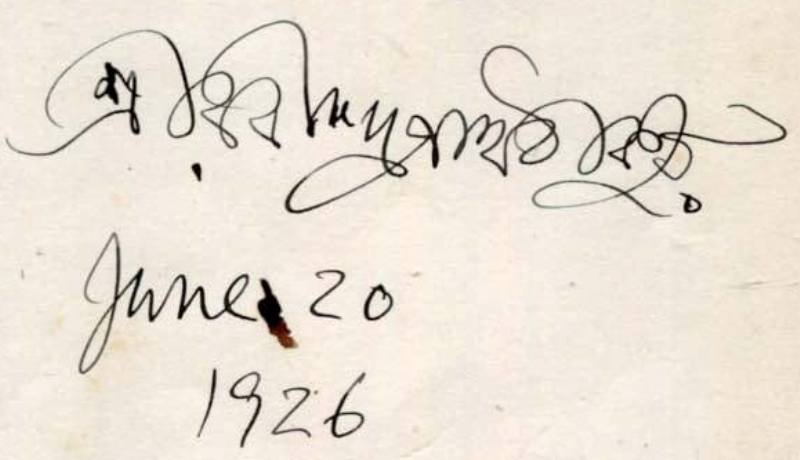 |
| Nationality | British Indian |
| Hometown | Calcutta (now Kolkata) |
| School | He attended one of the Bengali-medium schools established by Iswar Chandra Vidyasagar and a number of English-speaking schools in Calcutta. After he turned 14, he was mostly home-tutored. [9]OpenEdition He also attended a public school in Brighton, East Sussex, England. [10]Hindustan Times |
| College/University | University College, London |
| Educational Qualification | He didn't complete his formal education, and in 1940, he was awarded an honorary doctorate by Oxford University. [11]The Economic Times |
| Religion/Religious Views | Although Rabindranath Tagore followed Brahmoism, a doctrine within Brahmo Samaj initiated by Raja Rammohan Roy, he did not support religious institutions or rituals associated with Hinduism, Islam, or Christianity. Instead, Tagore's belief system centered on elevating humanity to a divine level and perceiving God in a more humanized form. Tagore once explained the meaning of the ‘humanization of God’ and said, "Humanization of God does not merely mean that God is God of humanity but also it mean that it is the God in every human being.” Tagore's understanding of God, unity, and equality naturally emerged through his speeches, poetry, and literary works. He was born during India's shift from medieval to modern times and was raised amidst a climate of intense religious devotion. As he matured, Tagore was significantly influenced by the progressive ideals of the Brahmo Samaj, initiated by Raja Rammohan Roy, which sought to combine together various religious beliefs. He was deeply impressed by the unorthodox Baul singers of Bengal, wandering ascetics who were not associated with institutionalized religion and places of worship. Tagore elaborated the humanistic philosophy of the Baul singers in his article 'An Indian Folk Religion' found in his book Creative Unity. Moreover, he drew inspiration from Kabir's philosophy, translating close to one hundred couplets of Kabir's work into English. Kabir's teachings, steeped in love, an impartial approach to religion, and a spiritually centered faith in humanity, deeply inspired Tagore. While quoting Kabir’s philosophy in Gitanjali, Tagore wrote, "He is there where the tiller is tilling the hard ground and where the path-maker is breaking stones.” The Upanishads and the Bhagavad Gita significantly shaped Tagore's perspective on religion. In the preface of his book Sadhana, a book on spirituality, he wrote, "To me, the verses of the Upanishads and the teachings of Buddha have ever been things of the spirit and therefore endowed with boundless vital growth, and I have used them, both in my own life and in my preaching as being instinct with special meaning for me.” Although Tagore drew inspiration from Upanishadic scholars, the humanitarian principles of Lord Buddha, the unorthodox beliefs of the Bauls, and the mystical teachings of various saints, his religious philosophy, in fact, originated from his own thought process. [12]International Journal of English Language, Literature in Humanities - Volume 6, Issue 1 |
| Caste | As per Prabhat Kumar Mukhopadhyaya, a biographer of Rabindranath Tagore, the Tagore family belonged to Rarhi Brahmins originating from Kush village in the Burdwan district of West Bengal, initially bearing the surname Kushari. In the first volume of his book Rabindrajibani O Rabindra Sahitya-prabeshak, Prabhat wrote, "The Kusharis were the descendants of Deen Kushari, the son of Bhatta Narayana; Deen was granted a village named Kush (in Burdwan zilla) by Maharaja Kshitisura, he became its chief and came to be known as Kushari." [13]Rabindrajibani O Rabindra Sahitya-prabeshak by Prabhat Kumar Mukhopadhyaya Certain accounts suggest that Rabindranath Tagore belonged to the Pirali Brahmin caste, considered by some as socially polluted due to their interactions with Muslims. [14]Sahapedia |
| Controversies | • Child marriage of his daughters Tagore faces significant criticism for arranging the marriages of his three daughters during their childhood, which is against his early opposition to child marriages dating back to 1887. Interestingly, during the period when he arranged his daughters' marriages, Tagore penned the Bengali novella "Nashtanirh" (The Broken Nest) in which he depicted the plight caused by child marriages. [15]The Scottish Centre of Tagore Studies • German funds row He was said to be involved in trying to remove British rule from India with Germany funds. People accused him because he had connections with Indian nationalists Subhas Chandra Bose and Rash Behari Bose, and papers taken from Indian nationalists in New York supported these claims. [16]CNN • Criticism for aggressive lectures on nationalism Tagore's strong talks about nationalism received a lot of negative comments from the press. In 1916, during his trip to the USA, some radical Indians planned to kill him. Luckily, they ended up arguing among themselves, and Tagore narrowly escaped being assassinated. [17]The Statesman |
| Relationships & More | |
| Marital Status (at the time of death) | Widower |
| Affairs/Girlfriends | Victoria Ocampo (Argentine writer and intellectual)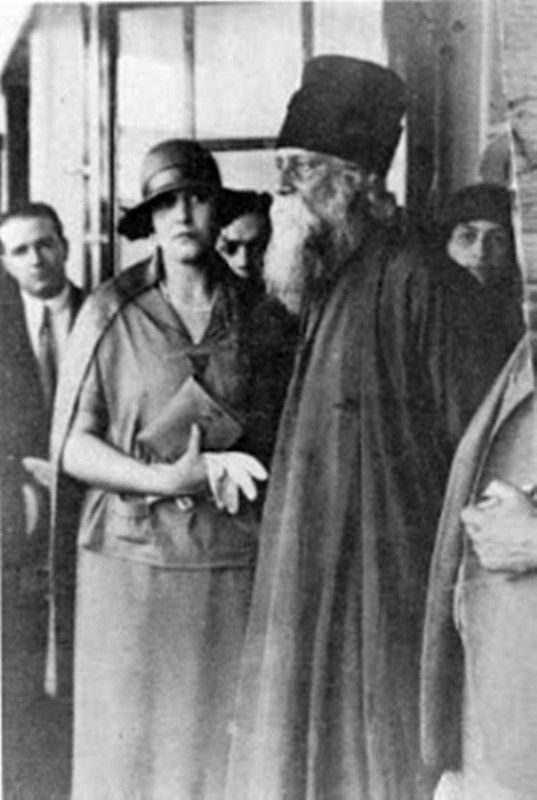 |
| Marriage Date | 9 December 1883 |
| Family | |
| Wife/Spouse | Mrinalini Devi (born Bhabatarini)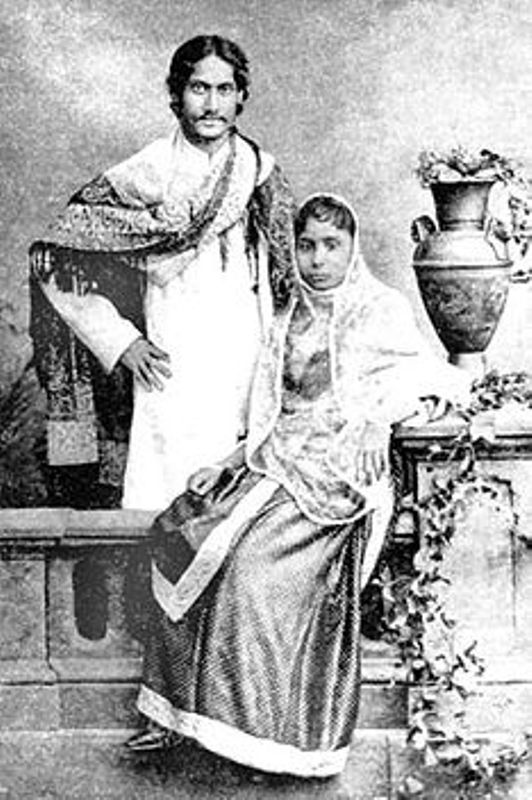 Note: At the time of their marriage, Tagore was 22-year-old, while Mrinalini Devi was 11-year-old. [18]Feminism in India |
| Children | Son- 2 • Rathindranath Tagore (1888-1961) (educationist, agronomist, painter) 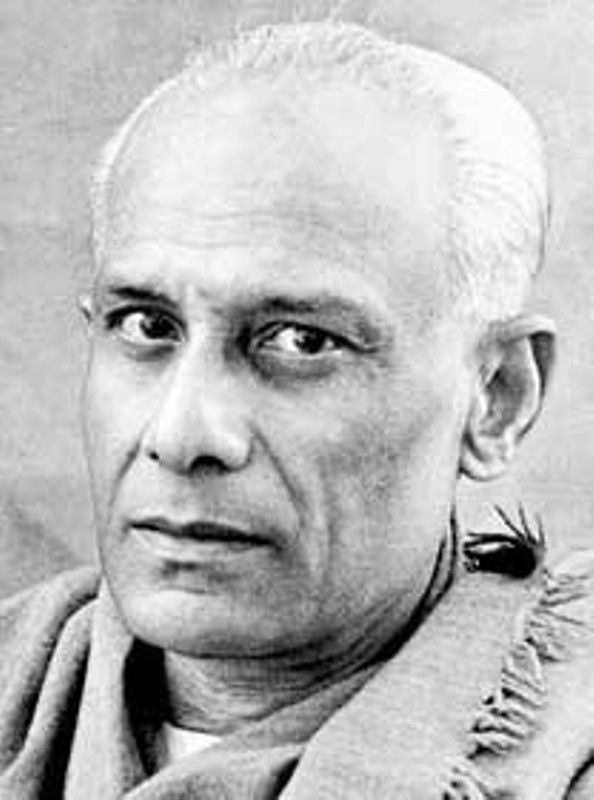 • Shamindranath Tagore (1896-1907) (youngest child) Daughter- 3 • Renuka Tagore (1890-1904) • Madhurilata Tagore also called 'Bela' (1886-1918) (first child and eldest daughter) 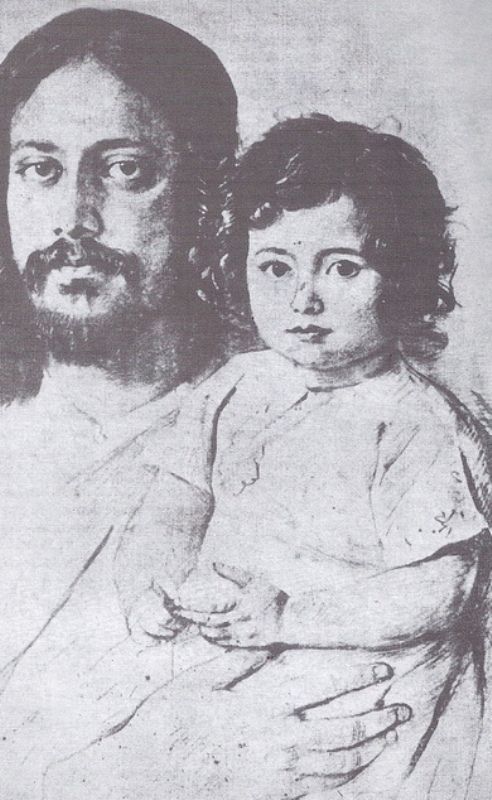 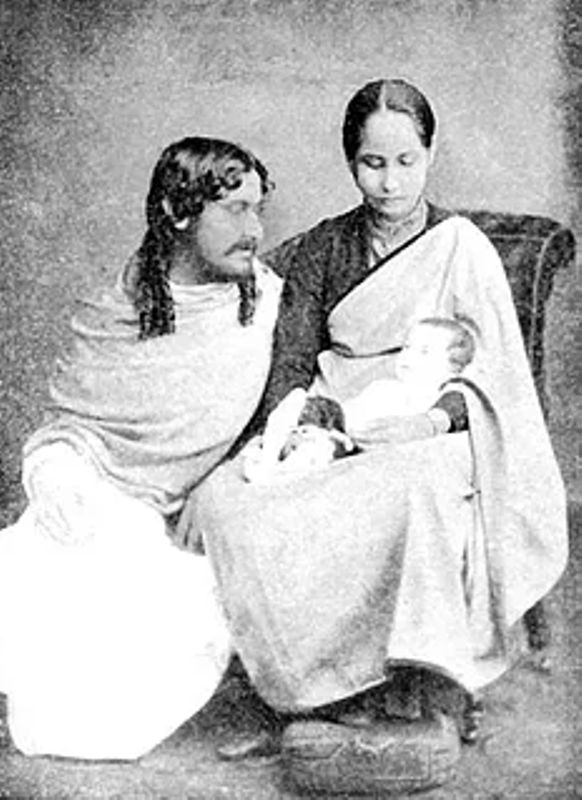 • Meera Tagore also called 'Atasi' (1892-1962) (youngest daughter) 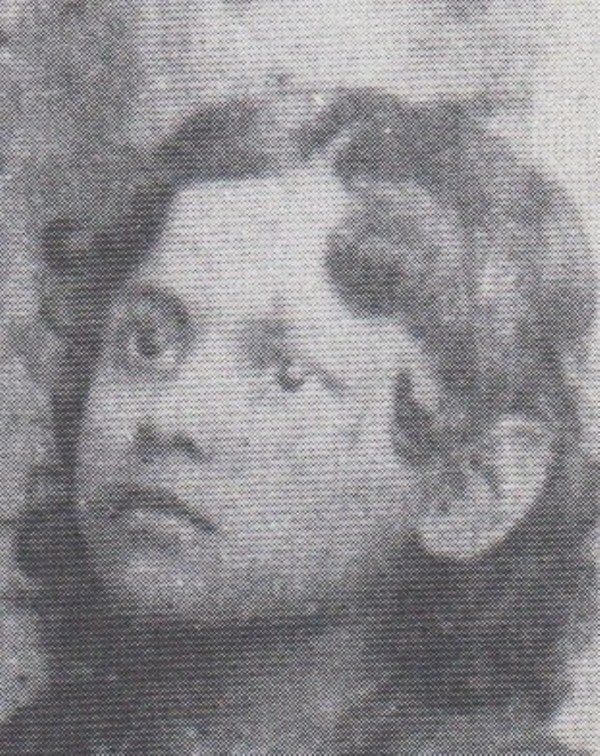 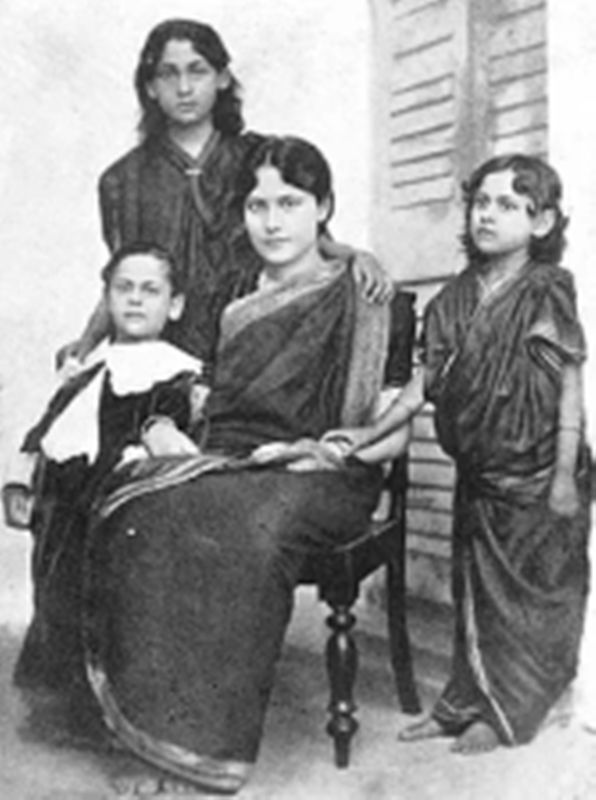 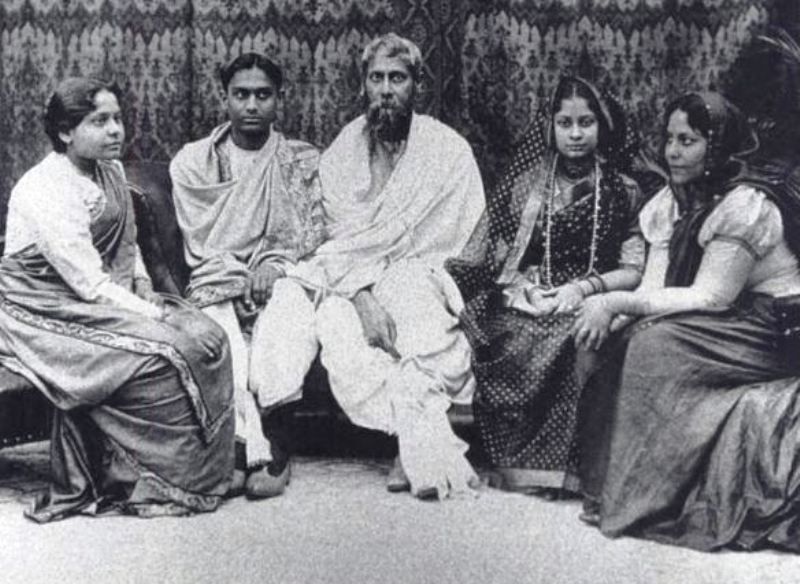 |
| Parents | Father- Debendranath Tagore (15 May 1817 – 19 January 1905) (a Bengali philosopher and religious savant)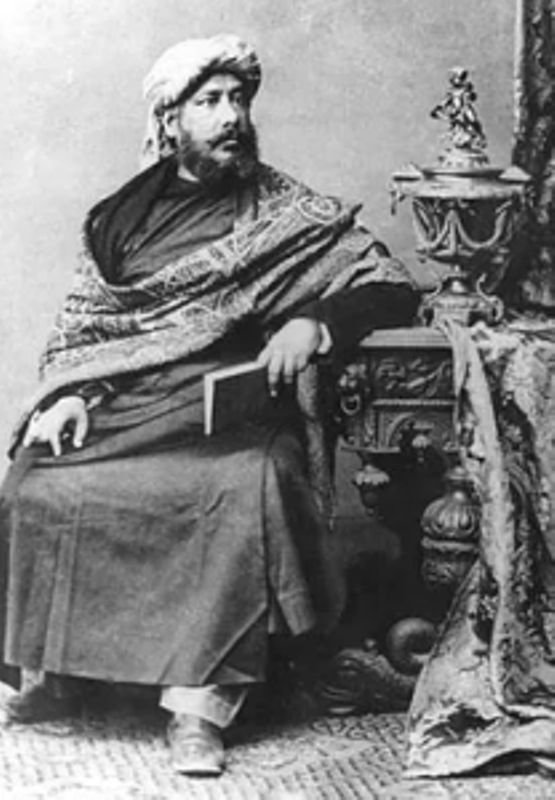 Mother- Sarada Devi (homemaker) (died in 1875) 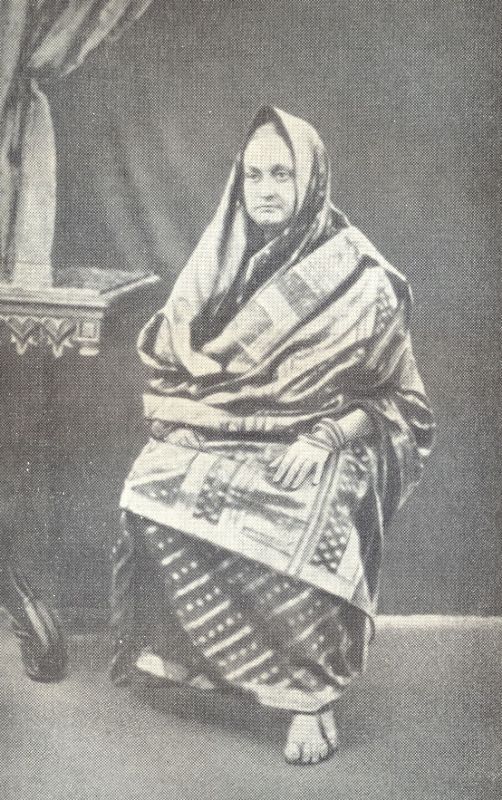 |
| Siblings | Brother(s)- • Dwijendranath (1840–1926) (eldest) (poet, music composer, and scholar) 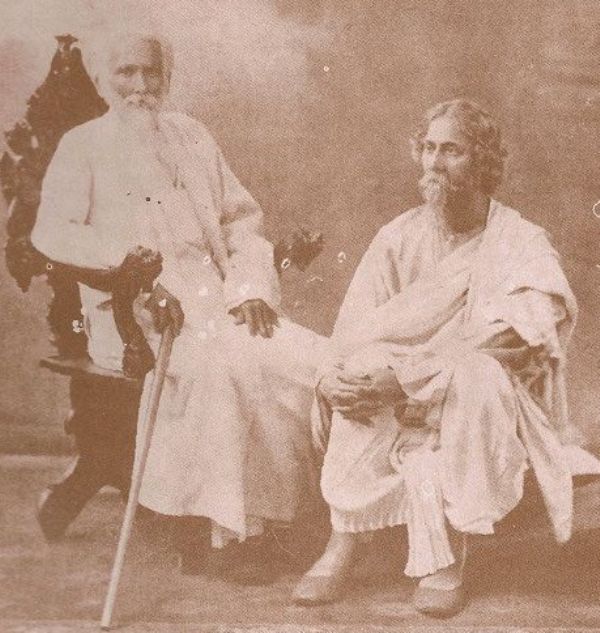 • Satyendranath (1842–1923) (civil servant) 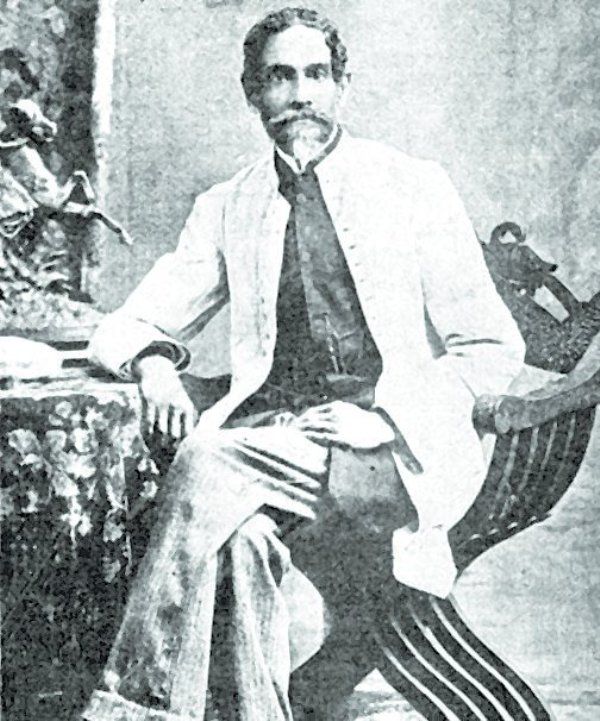 • Hemendranath (1844–1884) (spiritual seer and Yogi) 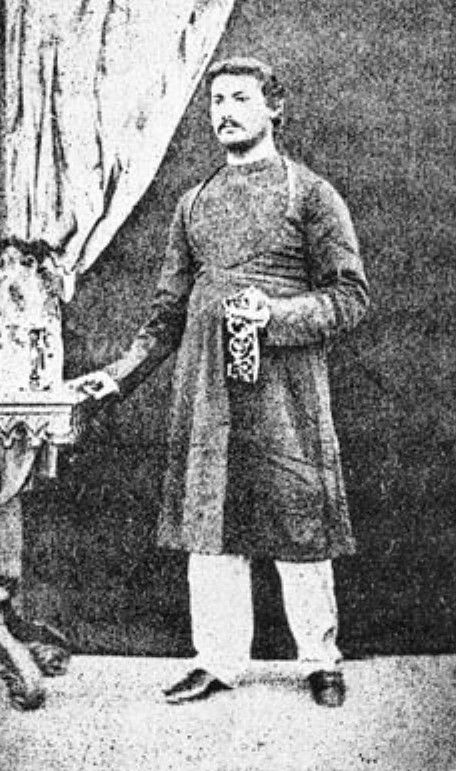 • Birendranath (1845–1915) • Jyotirindranath (1849–1925) (scholar, music composer, artist, and theatre personality) 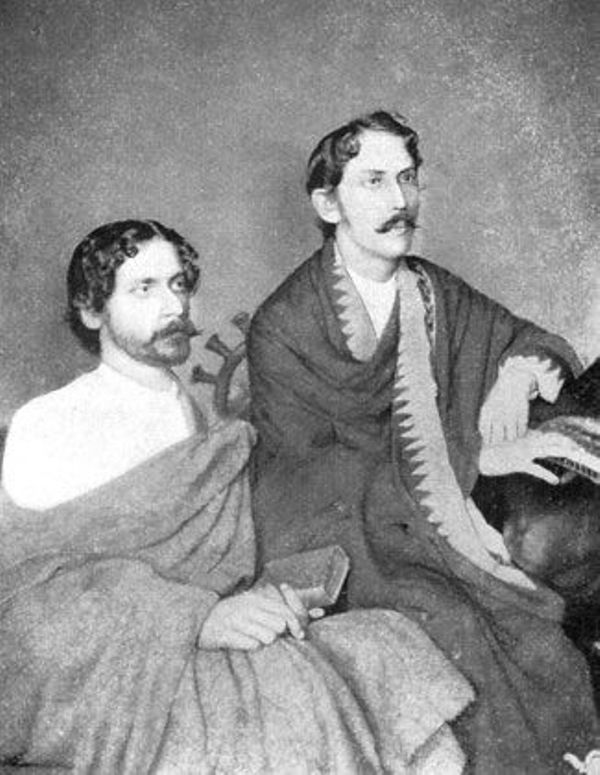 • Punyendranath • Budhendranath • Somendranath Sister(s)- • Soudamini (writer) • Swarnakumari (1855–1932) (writer, song-composer, editor, and social worker) 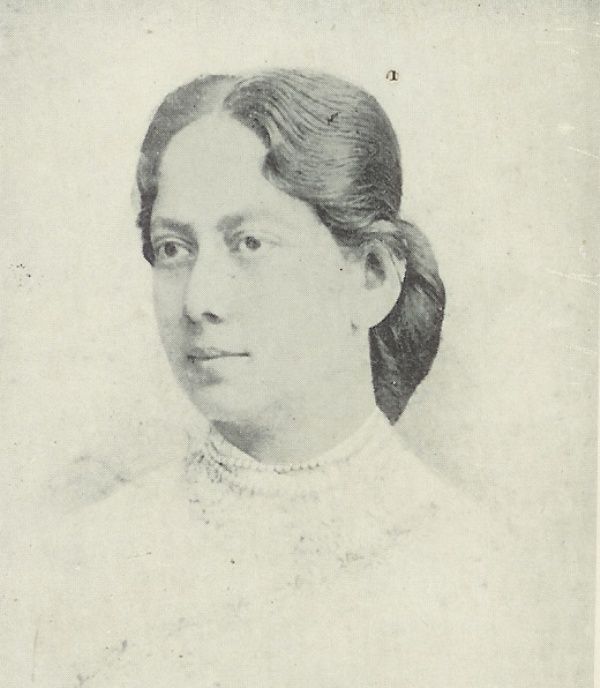 • Sukumari • Saratkumari Note: Tagore had 13 siblings, and he was the youngest and the fourteenth child of his parents. |
| Other Relatives | • Dwarkanath Tagore (paternal grandfather) (1794–1846) (industrialist)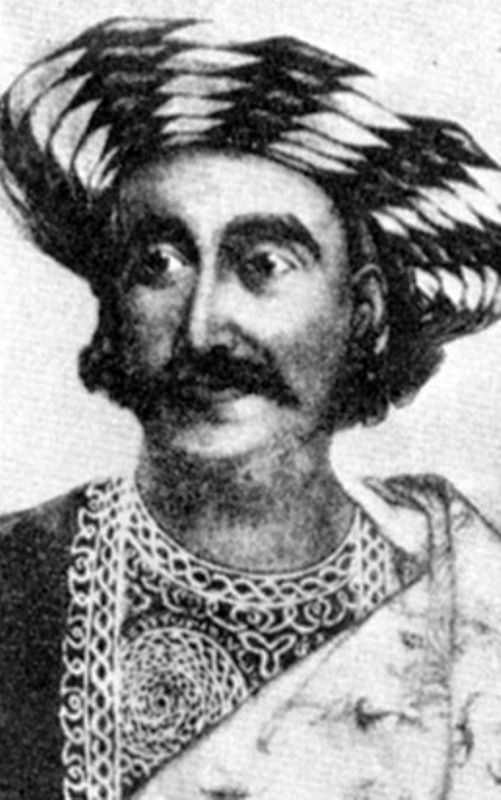 • Sharmila Tagore (Bollywood actress) - Her maternal grandmother, Latika Tagore, was the granddaughter of Rabindranath Tagore’s brother Dwijendranath. Note: Dwarkanath Tagore was the first Indian to travel to Europe. |
| Favourites | |
| Poet(s) [19]The Print | Thomas Chatterton (an English poet), Chandidas (a medieval Bengali poet), Vidyapati (a medieval Bengali poet) |
| Leader | Mahatma Gandhi |
| Legacy | |
| Festivals | • Rabindra Jayanti - an annual cultural festival celebrated on the 25th day of the Bengali month of Boishakh • Tagore International Literature and Arts Festival |
| Awards & Prizes | • Rabindranath Tagore Literary Prize - founded in 2018 by US-based independent and non-profit publishing house Maitreya Publishing Foundation (MPF) • Tagore Award - established by the Government of India in 2011 • The Rabindra Puraskar or the Rabindra Smriti Puraskar - the highest honorary literary award in West Bengal administered by the Government of West Bengal • Tagore Ratna and Tagore Puraskar - conferred on the occasion to commemorate 150 birthday of Rabindranath Tagore by Sangeet Natak Akademi |
| Places | • Rehov Tagore - a street in Tel Aviv named after Rabindranath Tagore in May 2020, on the occasion of the poet’s 159th birthday, by the Israeli government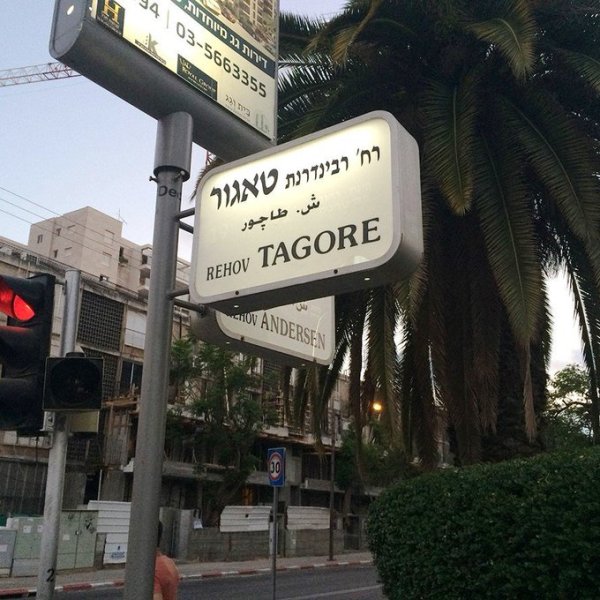 • Thakurova - an area in Prague, the capital of the Czech Republic, was named after him in July 2017 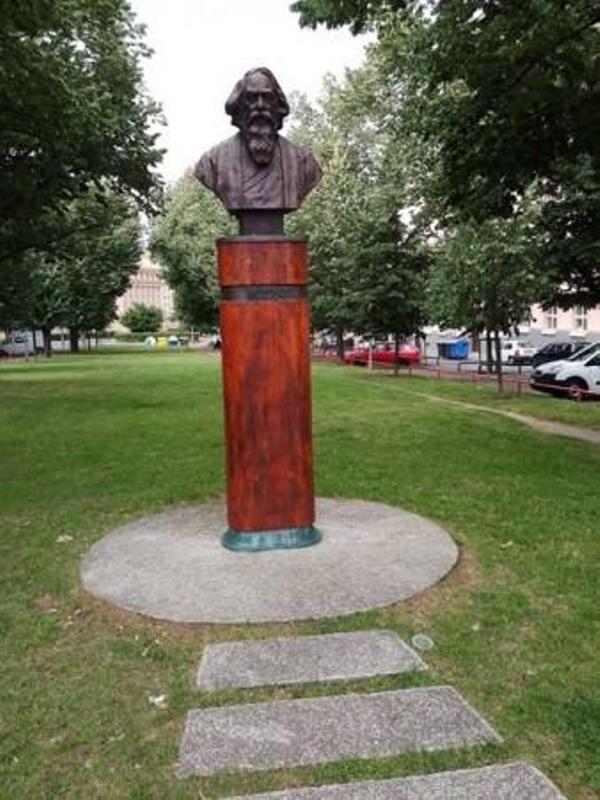 • Tagore Garden Metro Station - a Metro station on the Blue Line of the Delhi Metro is named after him; it was opened on 31 December 2005 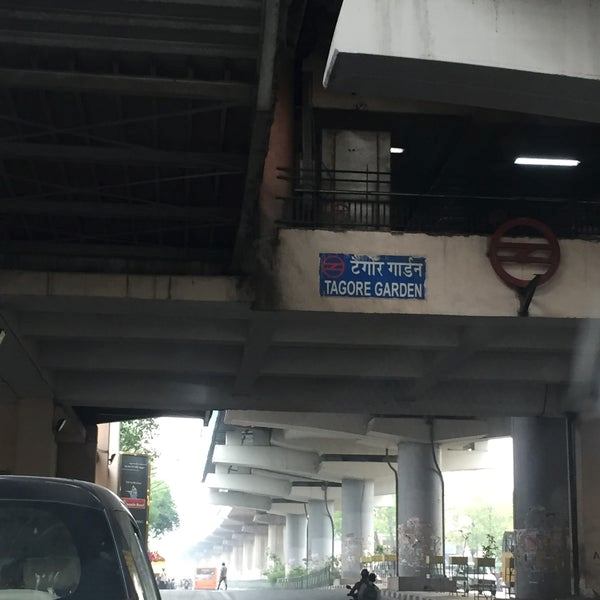 • Rabindranath Tagore Nagar (R. T. Nagar) - an area in Bangalore (now Bengaluru), India, developed by Bangalore Development Authority (BDA) in the 1970s • Rabindra Sarobar (previously known as Dhakuria Lake) - an artificial lake in South Kolkata named after him by the Calcutta Improvement Trust (CIT) in 1958 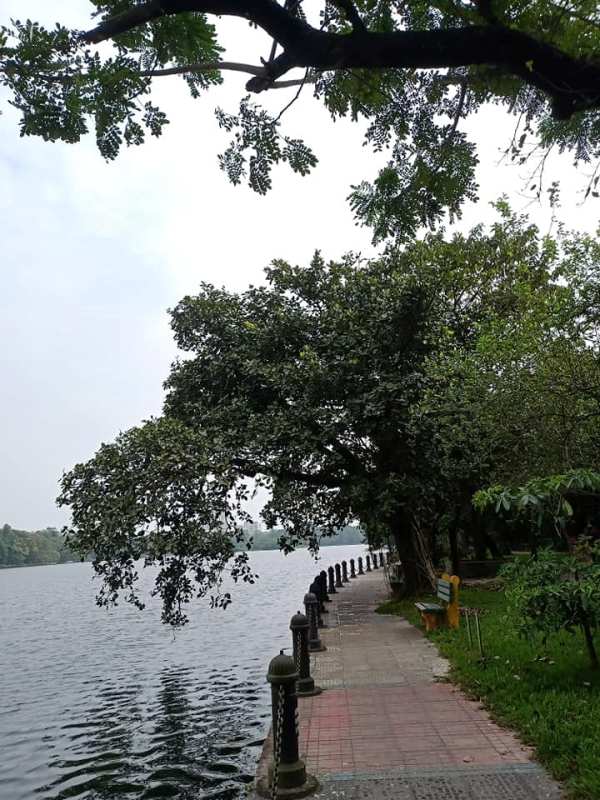 • Tagore Town - a neighborhood in Allahabad, India, is named after him; it was built in 1909 |
| Institutes | • Rabindra Bharati University, Kolkata • Rabindranath Tagore Medical College, Udaipur, Rajasthan • Rabindranath Tagore University, Hojai, Assam • Rabindra Srijonkala University in Keraniganj, Dhaka, Bangladesh • Rabindranath Tagore Secondary School in Mauritius Note: There are many universities and institutes named after Rabindranath Tagore in various cities across the globe. |
| Buildings | • Rabindra Library (Central) in Assam University • Rabindra Nazrul Art Building, Arts Faculty, in Islamic University, Bangladesh • Rabindra Parishad - a multi-purpose cultural centre in Patna, Bihar • Tagore Theatre in Chandigarh • Rabindranath Tagore Memorial Auditorium in Sri Lanka • Rabindra Library (Central) in Assam University • Rabindra Nazrul Art Building, Arts Faculty, in Islamic University, Bangladesh • Rabindra Parishad - a multi-purpose cultural centre in Patna, Bihar • Tagore Theatre in Chandigarh • Rabindranath Tagore Memorial Auditorium in Sri Lanka • Rabindra Sadan - a cultural centre and theatre in Kolkata 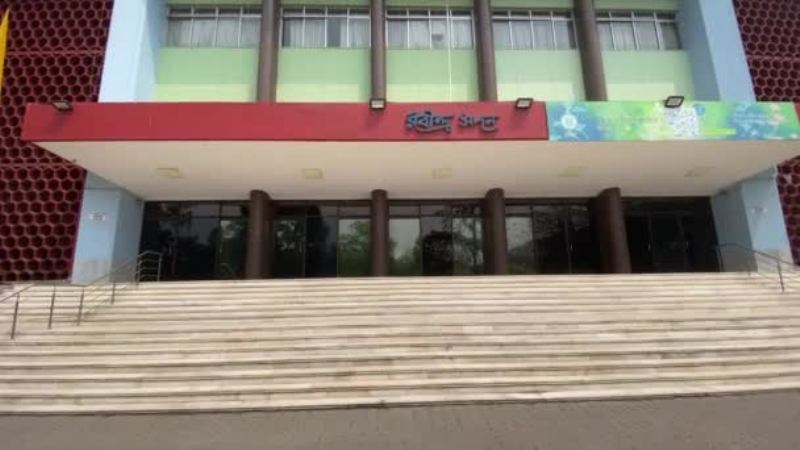 Note: There are many buildings named after him in various cities across the globe. |
| Museums | • Rabindra Bharati Museum at Jorasanko Thakur Bari in Kolkata • Tagore Memorial Museum at Shilaidaha Kuthibadi in Shilaidaha, Bangladesh • Rabindra Memorial Museum at Shahzadpur Kachharibari in Shahzadpur, Bangladesh • Rabindra Bhavan Museum in Santiniketan, India |
| Bridge | Rabindra Setu over the Hooghly River in West Bengal - Earlier, it was named as the Howrah Bridge, and on 14 June 1965, it was renamed Rabindra Setu. |
| Species | B. tagorei. Barapasaurus - It is the only species of a genus of basal sauropod dinosaur from Early Jurassic rocks of India, which has been named after Rabindranath Tagore. |
Some Lesser Known Facts About Rabindranath Tagore
-
Who is Rabindranath Tagore?
Rabindranath Tagore was an Indian polymath who is known for his works as a poet, playwright, novelist, short story writer, painter, spiritualist, lyricist, composer, singer, and as an artist, essayist, and educationist. In 1913, he won the Nobel Prize in Literature for his collection of poems titled Gitanjali.
-
Grew up in an affluent family
Rabindranath Tagore grew up in Jorasanko Thakur Bari, where his family members, predominantly poets, musicians, playwrights, and novelists, engaged actively in musical, literary, and dramatic activities.
His ancestors relocated from their hometown to Govindpur (now Gobindapur), one of three villages that eventually formed Calcutta (now Kolkata). Through their involvement in commerce and banking, they gathered considerable wealth, acquiring numerous properties in the region. It is believed that the Tagore family prospered due to the increasing influence of the British East India Company.
-
An elite and educated family
His father, Debendranath Tagore, was a Bengali thinker and spiritual expert who established the Brahmo religion in 1848. His father deeply studied European philosophy and was regarded as a prominent figure in the emerging era of Bengali society. Although deeply religious, he didn’t follow all the concepts of Hinduism, a characteristic later inherited by Rabindranath. His paternal grandfather, Dwarkanath Tagore, is recognized as among the initial Indian industrialists who played a crucial role in advancing the Bengal Renaissance. In 1828, Dwarkanath Tagore joined the nineteenth-century social and religious reformer Raja Rammohan Roy in the Brahma Samaj Movement, which aimed to reform Hindu society.
Later, Debendranath Tagore, Rabindranath’s father, also became a participant in this movement and founded a meditation center named ‘Santiniketan’ (the Abode of Peace) on land situated approximately 100 miles away from Calcutta in 1863.
Rabindranath’s eldest brother, Dwijendranath, is credited with introducing shorthand and musical notations in Bengali. Dwijendranath also translated Kalidasa’s Meghdoot into Bengali. Satyendranath, Tagore’s second oldest brother is considered the first Indian member of the elite and formerly all-European Indian Civil Service. Hemendranath, Tagore’s third oldest brother, was a spiritual visionary and Yogi who made significant contributions to the evolution of modern Brahmoism, now known as the “Adi Dharm” religion. All his sisters were known for their beauty and education.
-
Upanayana (coming-of-age rite)
When Tagore turned eleven, he underwent his upanayana, a coming-of-age ceremony. Following this ritual in 1873, he travelled across various cities in India, such as Dalhousie and Amritsar. Tagore spent nearly a month in Amritsar, where he was deeply moved and influenced by the Gurbani and Nanak Bani at the Golden Temple. While mentioning his Golden Temple experience in his My Reminiscences (1912), Tagore wrote,
The golden temple of Amritsar comes back to me like a dream. Many a morning have I accompanied my father to this Gurudarbar of the Sikhs in the middle of the lake. There the sacred chanting resounds continually. My father, seated amidst the throng of worshippers, would sometimes add his voice to the hymn of praise, and finding a stranger joining in their devotions they would wax enthusiastically cordial, and we would return loaded with the sanctified offerings of sugar crystals and other sweets.” [20]Mainstream Weekly
-
Mostly home-tutored
During his upbringing, colonial authorities established primary schools in India. Tagore, coming from a rich Bengali family, received most of his education through private tutoring, a common practice among rich families at that time. [21]Open Edition He initially attended a Bengali-medium school founded by Iswar Chandra Vidyasagar, an eminent 19th-century Indian educator and social reformer. Tagore credited this institution for increasing his likeness to the Bengali language and literature. Despite briefly attending English-speaking schools, he never liked their instructional methods and showed no desire to be educated in a foreign language. Around the age of 14, Tagore began distancing himself from formal schooling, and he preferred a combination of home tutoring and self-study for his education and learned lessons in wrestling, music, and drawing from skilled professionals. He received lessons in Sanskrit, astronomy, and religious scriptures from his father, Debendranath, which laid the foundation for Tagore’s reformed religious beliefs.
-
London Days
In 1878, at 17 years old, Rabindranath Tagore went to London with the intention of preparing for either the Indian Civil Service or a legal career. Initially enrolled in a public school in Brighton, East Sussex, he resided in a house owned by the Tagore family near Brighton and Hove in Medina Villas. [22]Hindustan Times At University College, London, Tagore was exposed to British society and Western music, which he found enjoyable. However, he didn’t complete his studies in London, returning home after eighteen months. Back in India, he continued to refine his skills in creative writing and music. In 1940, Oxford University bestowed upon him an honorary doctorate. [23]The Economic Times
-
A letter to his wife
After 19 years of marriage, his wife, Mrinalini Devi, died. Tagore once wrote a letter to his wife, expressing his feelings for her. Tagore wrote,
If you and I could be comrades in all our work and in all our thoughts it would be splendid, but we cannot attain all that we desire.” [24]The Economic Times
-
Tagore and his daughters
Tagore’s first child, Madhurilata, also called “Bela,” was very beautiful, and she was, reportedly, the most dearly loved daughter to Rabindranath. Tagore, while admiring Bela, once said,
My eldest daughter Bela… was exceptionally beautiful in body and mind.” [25]The Scottish Centre of Tagore Studies
Tagore’s daughter Renuka Tagore (1890-1904) died at the tender age of thirteen. Tagore shared a close bond with Renuka. When she fell ill with tuberculosis, he took her to the Himalayas in May 1903, seeking a healthier climate. The journey to the Himalayas was long and difficult. During this trip, Tagore composed numerous poems for children, later compiled and published as “Sisu” (The Child, 1903), which gained popularity under the title ‘The Crescent Moon.’ Tagore’s third and youngest daughter, Mira (1892-1962), also known as Atasi, had a troubled marriage due to her husband’s volatile temperament and addiction issues. Tagore once expressed regret over the choice of husband for his daughter Mira and said,
How can I be so cruel to Mira when it was I who had dealt the first blow in her life by marrying her off without thinking carefully enough about it? … There is a barbarity about Nagen which Mira has come to dread. … Her life is already destroyed, now it is for me to protect her and make her as happy as possible. I must bear as much pain for it as I can because I am responsible for her misery.” [26]The Scottish Centre of Tagore Studies
-
Tagore’s Muse
It is said that Kadambari Devi, who was married to Tagore’s elder brother Jyotirindranath, was his muse. Kadambari was two years younger than Tagore. The tale of their affection still holds a sense of mystery even today. In his renowned autobiography “Chelebela” (My Boyhood Days), Tagore described his initial encounter with Kadambari. He wrote,
A new bride came to the house, slender gold bracelets on her delicate brown hands…I circled around her at a safe distance, but I did not dare to go near. She was enthroned at the centre of affection and I was only a neglected, insignificant child …” [27]Feminism in India
Despite lacking formal education, Kadambari reportedly had a better understanding of poetry than the poet himself. It’s believed that she played an important role in Tagore’s life. Kadambari served as the muse behind many of Tagore’s compositions, offering creative insights and feedback to him. Tagore affectionately nicknamed her after Hecate, the Greek goddess associated with the night, moon, and magic. 19 years old Tagore once dedicated his famous lyrics to Kadambari –
Tomarei koriachhi jibaner dhrubo tara (Thou art the guiding beacon of my life)” [28]Feminism in India
On 21 April 1884, Kadambari died under mysterious circumstances, suspected to be a suicide. Her demise deeply shattered Tagore. Following her death, Tagore penned a letter to his trusted confidant C. F. Andrews, expressing his deep sorrow over the loss of Kadambari. Tagore wrote,
But where is the sweetheart of mine who was almost the only companion of my boyhood and with whom I spent my idle days of youth exploring the mysteries of dreamland? She, my Queen, has died and my world has shut against the door of its inner apartment of beauty which gives on the real taste of freedom.” [29]Feminism in India
Later, Tagore wrote numerous poems and songs in Kadambari’s memory. In a popular Rabindra Sangeet lyrics, Tagore wrote,
Tobu Mone Rekho (Pray, love, remember)”
In another song that Tagore composed in Kadambari’s memory, he wrote,
Amaar praner pore chole gelo ke (The one who went out of my life)” [30]Feminism in India
-
A romantic encounter
Rabindranath Tagore shared a brief romantic connection with an Argentine writer and intellectual, Victoria Ocampo (7 April 1890 – 27 January 1979). Victoria deeply admired Tagore’s literary works. In November 1924, while Tagore was on his way to Peru for independence centenary celebrations, he made a stop in Buenos Aires on 6 November 1924 due to health reasons. When Victoria got the news of Tagore’s visit to the city, she offered to care for him during his 58-day stay in the city during which Tagore became romantically involved with her. Victoria was undergoing a transition phase after her separation from her husband and during a love affair with her cousin. In the midst of this, Ocampo viewed Tagore as an Eastern spiritual guide who could illuminate her path forward. However, the 63-year-old widowed poet misunderstood the 34-year-old Ocampo’s devotion as a romantic interest. For Tagore, it was a form of affection he had long awaited to remove his intellectual loneliness. He expressed these sentiments in his poem “Shesh Basanth” (the last spring) that he wrote on 21 November 1924 during his stay as Ocampo’s guest. He wrote,
While walking on my solitary wayI met you at the dusk of nightfall
I was about to ask you take my hand
When I gazed at your face and was afraid
For I saw there the glow of the fire that lay asleep
In the deep of your heart’s dark silence”
While describing Tagore’s advances in her autobiography, Ocampo wrote,
One afternoon, as I came into his room while he was writing, I leaned towards the page which was on the table. Without lifting his head towards me he stretched his arm, and in the same way as one gets hold of a fruit on a branch, he placed his hand on one of my breasts. I felt a kind of shudder of withdrawal like a horse whom his master strokes when he is not expecting it. The animal cried at once within me. Another person who lives inside me warned the animal, ‘ be calm… fool’ It is just a gesture of pagan tenderness. The hand left the branch after that almost incorporeal caress. But he never did it again. Every day he kissed me on the forehead or the cheek and took one of my arms, saying “such cool arms.”
Victoria Ocampo presented Tagore with an armchair to bring back to India from Buenos Aires. Tagore regularly used this chair during his stay as Ocampo’s guest for approximately two months, from November to December 1924. The chair remains preserved in Shantiniketan. According to reports, in his final years, Tagore often found solace in that chair, and in April 1941, he even composed a poem about it. Tagore wrote,
Yet again, if I can, will l look for that seatOn the top of which rests, a caress from overseas
I knew not her language
Yet her eyes told me all
Keeping alive forever
A message of pathos”
On Tagore’s demise, Ocampo dispatched a telegram to Tagore’s son, conveying the message ‘Thinking of him’ (pensando en él), which served as the inspiration for the title of the 2018 Argentine film ‘Thinking of Him.’ The film depicts the connection and relationship shared between Rabindranath Tagore and Victoria Ocampo.
-
Early literary works
The rich cultural and literary environment in the Tagore family encouraged Rabindranath to start writing poetry at a very young age. Initially, he published numerous poems, some anonymously and others under his pen name “Bahanusingha.” Tagore soon began contributing to various Bengali publications, such as “Balak” and “Bharati.” He wrote his first short story titled “Bhikharini” (The Beggar Woman) in 1877, which is considered the first Bengali-language short story. In 1882, Tagore published Sandhya Sangeet, a volume of Bengali verse that included his famous poem Nirjharer Swapna Bhanga (The awakening of the fountain). From 1884 to 1890, he wrote many poems, prose articles, criticism, plays, and novels.
-
Shelaidaha (1878–1901) Days
In 1890, Tagore made his second visit to the United Kingdom but returned within a month to look after the family estate, Kuthibari, a three-story pyramid-shaped terraced bungalow set within eleven acres of land in Shelaidaha (now part of Bangladesh). It was during this time that he gained a close understanding of the harsh life suffered by the poor Bengali peasants. Tagore’s wife and children later joined him at Shelaidaha in 1898. His stay there exposed him deeply to the social, political, and economic hardships faced by the peasants. Tagore expressed his observations of the peasants’ suffering in an article in which he wrote,
Our so-called responsible classes live in comfort because the common man has not yet understood his situation. That is why the landlord beats him. The money-lender holds him in his clutches; the foreman abuses him; the policeman fleeces him; the priest exploits him; and the magistrate picks his pocket.”
While looking after his family’s inherited property in Shelaidaha, Rabindranath Tagore recognized the potential for transforming rural life through education and cooperation. He once spoke on ‘The Vicissitudes of Education’ and strongly favoured using the mother tongue. During this period, he heavily experimented with various teaching methods. Soon, Tagore established his own school in Shelaidaha, enrolling his own children and employing several skilled teachers, including an Englishman instructing in the English language. [31]Tagore’s School and Methodology by Thomas B. KANE, Edinburgh Napier University He also established co-operatives and healthcare facilities in the villages of his family estate and introduced innovative farming techniques.
-
Most productive phase
Amidst the rural reforms in Shelaidaha, Tagore continued his writing. The lush landscapes, flowing rivers, and simplicity of rural Bengal inspired him to compose numerous renowned essays, short stories, and poems, such as “Sonar Tori,” “Kotha o Kahini,” “Chitra,” and “Chaitali.” In 1890, he released “Manasi,” a collection of poems that stands as one of his most acclaimed literary works.
In 1900, he published his masterpiece Galpaguchchha, a three-volume composition of 84 stories.
During this phase, he corresponded extensively with his niece by writing letters to her, resulting in the publication of collections titled “Chhinnapatra” (Torn letters) and “Chhinnapatravali” (A collection of torn letters). The majority of poems from “Kheya” and “Naibedya,” along with numerous songs featured in “Gitanjali” and “Geetimalya,” were composed during his stay in Shelaidaha, where he also did the English translation of “Gitanjali” in 1912. [32]National Herald These literary works are regarded as landmarks in Bengali prose. Tagore himself described the period between 1891 and 1895 as his ‘Sadhana,’ marking it as his most productive phase. While residing in Shelaidaha, Tagore utilized the family boat, Padma, to navigate the Padma River, visiting villages to collect nominal rents. Engaging with villagers during these visits helped him understand their concerns, an experience that helped him in his later educational experiments.
-
Brahamacharyashram: A boarding school
In 1901, Tagore moved from Shelaidaha to settle in Santiniketan, establishing the Brahamacharyashram (or Ashram) School. Beginning with a handful of students, including his own son, the school aimed to develop close connections between teachers and pupils. Tagore chose not to charge any fees, personally bearing all financial responsibilities.
-
Literary work at Santiniketan
During his stay in Santiniketan, Tagore wrote about India’s history including the stories of noble self-sacrifice. It was during this phase that he wrote some of his widely acclaimed realistic novels like “Choker Bali” (1901), “Naukadubi” (1903), and “Gora” (1910).
-
Nobel Prize
The noted English painter Sir William Rothenstein and poet W.B. Yeats were deeply impressed by Tagore’s poems and writings, previously translated into English. During his third trip to the United Kingdom in 1912, Tagore gained recognition as a distinguished poet and intellectual. In November 1913, Rabindranath Tagore received the Nobel Prize in Literature for “Gitanjali,” his most renowned poetry collection, making him the first Asian and non-European to receive this prestigious award. The Swedish Academy, in its statement, said,
The Nobel Prize in Literature 1913 was awarded to Rabindranath Tagore “because of his profoundly sensitive, fresh and beautiful verse, by which, with consummate skill, he has made his poetic thought, expressed in his own English words, a part of the literature of the West.”
-
When Gitanjali was lost
During his second trip to London, the Gitanjali manuscript went missing while Tagore was on his way to show the English translation to William Rothenstein, hoping to persuade William Butler Yeats to write an introduction. Tagore took the Tube to Rothenstein’s Hampstead home and lost the briefcase containing the manuscript along the way. After his son Rathindranath contacted the London Tube authorities, the briefcase was found, and Gitanjali went on to win India’s first Nobel Prize. [33]The Hindu
-
When his Nobel prize was stolen
On 25 March 2004, Tagore’s Nobel Prize was stolen from the secure vault at Visva-Bharati University following which the Swedish Academy issued two duplicates of Tagore’s Nobel Prize. In 2016, the stolen Nobel Prize was found after a baul singer named Pradip Bauri, who was accused of providing shelter to the thieves, was arrested. [34]The Hindu A Bengali-language film titled Nobel Chor was released in 2012, which was inspired by the theft of Tagore’s Nobel Prize.
-
Knighthood
In the Birthday Honours of 1915, King George V bestowed a knighthood upon Rabindranath Tagore. However, following the Jallianwala Bagh massacre in 1919, Tagore gave up this honor by addressing a letter to Lord Chelmsford, the British Viceroy of India at that time. Tagore wrote,
The disproportionate severity of the punishments inflicted upon the unfortunate people and the methods of carrying them out, we are convinced, are without parallel in the history of civilised governments…The time has come when badges of honour make our shame glaring in their incongruous context of humiliation, and I for my part wish to stand, shorn of all special distinctions, by the side of my country men.”
-
Visva Bharati University
In 1916, Tagore went to Japan and the United States, delivering lectures that were later published in two volumes titled “Nationalism” (1917b) and “Personality” (1917c). Between 1878 and 1932, Tagore travelled across more than thirty countries, covering five continents. These global experiences influenced his vision to establish an institution gathering the world’s cultures and knowledge systems in one place. On 24 December 1918, he laid the foundation stone of Visva Bharati in Shantiniketan, West Bengal, which evolved into an international hub for cultural exchange and humanistic studies.
-
Sri Niketan: Tagore’s dream project
Between 1901 and 1921, Santiniketan experienced significant growth. However, Tagore aimed to introduce a different educational approach for rural Indian children centered on rural living. In 1921, Tagore collaborated with agricultural economist Leonard Elmhirst to establish a new school named Shikshasastra at Sri Niketan in Surul. This institution’s primary focus was to provide an all-round education to village children, mainly agricultural research. At Sri Niketan, handicrafts played an important role, where every student had to learn a specific trade. Later, the entire programme followed at Sri Niketan for rural development was adopted by India’s five-year plans.
-
Mahatma and Gurudev
Rabindranath Tagore and Mahatma Gandhi, two prominent figures of Modern India, held a deep mutual respect. They are famously identified as “Mahatma” (a title given to Gandhi by Tagore) and “Gurudev” (a title given to Tagore by Gandhi). Tagore reportedly coined the term “Mahatma” for Gandhi, and in response, Gandhi referred to Tagore as “Gurudev.” Charles Freer Andrews, an Englishman, served as the bridge connecting these two personalities. When Mahatma Gandhi returned to India, Andrews proposed that Tagore invite members of Gandhi’s “Phoenix family” to Santiniketan. In March 1915, Mahatma Gandhi and Rabindranath Tagore met for the first time at Santiniketan.
Later, they met on various occasions during which they would discuss various things, from politics and philosophy to food and diet. Mahatma Gandhi was a strict fruitarian, and he once told Tagore,
To fry bread in ghee or oil to make puris is to turn good grain into poison. It must be a slow poison.”
Tagore responded,
I have been eating puris all my life and it has not done me any harm so far.” [35]mkgandhi.org
Despite their close bond, both Tagore and Gandhi held different views on science, social and economic progress, nationalism, and patriotism. [36]The Economic Times Tagore had doubts about Mahatma Gandhi’s Non-cooperation Movement and disagreed with Gandhi’s philosophy concerning the “Charkha.” Tagore also criticized Gandhi for linking the Bihar earthquake to the sin of untouchability. Gandhi always received Tagore’s criticisms positively, and despite their differences, they maintained mutual respect. While talking about his differences with Tagore, Mahatma Gandhi once said,
I started with a disposition to detect a conflict between Gurudev and myself, but ended with a glorious discovery that there was none.” [37]mkgandhi.org
In 1940, Mahatma Gandhi’s visit to Santiniketan along with his wife, Kasturba, proved to be his last meeting with Tagore during which Tagore requested Gandhi to take Santiniketan under his protection to which Gandhi replied,
Who am I to take this institution under my protection?… It carries God’s protection because it is the creation of an earnest soul.” [38]mkgandhi.org
In 1945, Mahatma Gandhi made his last visit to Santiniketan; however, Tagore was not present to welcome him as Tagore had passed away in 1941. While addressing the Santiniketan community, Mahatma Gandhi said,
It is my conviction arrived at after a long and laborious struggle that Gurudev as a person was much bigger than his works; bigger even than this institution.” [39]mkgandhi.org
-
International Travles
Throughout his international travels, from 1878 to 1932, Tagore interacted with many intellectuals including Mussolini (in May 1926), Henri Bergson, Albert Einstein (in April 1930), Robert Frost, Thomas Mann, George Bernard Shaw, H.G. Wells, and Romain Rolland.
On 14 April 1930, Albert Einstein interviewed Tagore during which Tagore said,
Our passions and desires are unruly, but our character subdues these elements into a harmonious whole. Does something similar to this happen in the physical world? Are the elements rebellious, dynamic with individual impulse? And is there a principle in the physical world which dominates them and puts them into an orderly organization?”
-
Tagore’ Poetry
Tagore’s most acclaimed poetry collection, “Gitanjali,” made him the first Asian to receive the Nobel Prize in Literature in 1913. Tagore composed several other remarkable works, including “Manasi,” “Sonar Tori” (Golden Boat), and “Balaka” (Wild Geese). His poetic expression has a broad spectrum, including classical formalism, elements of humor, visionary themes, and moments of intense ecstasy. Tagore’s poetic technique is inspired by the writings of Vyasa, Kabir, and Ramprasad Sen, and it also reflects the impact of mystical Baul ballads, especially those by the bard Lalon.
-
Tagore’s Novels
Rabindranath Tagore wrote eight novels, including “Nastanirh” (The Broken Nest) in 1901, “Chokher Bali” in 1903, “Noukadubi” in 1906, “Gora” (Fair-Faced) in 1910, “Ghare Baire” (The Home and the World) in 1916, “Chaturanga” in 1916, “Shesher Kabita” in 1928, and “Jogajog” or “Yogayog” (Crosscurrents) in 1929. These novels depicted themes like Indian nationalism, the essence of Indian identity, self-discovery, personal liberty, solitude, and more.
-
Tagore’s Drama
At the age of sixteen, Tagore started getting the basics of drama alongside his brother Jyotirindranath. By the time he turned twenty, Tagore had written his first original play titled “Valmiki Pratibha.” Among Tagore’s theatrical works, his 1890 drama “Visarjan” stands out as the most notable one. His dramas often covered philosophical and allegorical themes, reflecting his creative depth. Some of his notable dramas are “Dak Ghar” (1912), “Raktakarabi” (1926), and “Chandalika” (1933). His adaptations for dance-drama including “Chitrangada,” “Chandalika,” and “Shyama” are collectively recognized as Rabindra Nritya Natya.
-
Tagore’s Short Stories
At the age of 16, in 1877, Tagore wrote his first story, “Bhikharini.” Tagore is considered to have invented the Bengali-language short story genre. Tagore’s short stories mostly capture the lives of India’s poor and ordinary citizens. Some of his popular short stories include “Kabuliwala” (published in 1892), “Kshudita Pashan” (published in 1895), and “Atithi” (published in 1895).
-
Rabindra Sangeet – Tagore’s Songs
Tagore was a notable songwriter and composer. He composed approximately 2,230 songs, creating a distinct genre known as Rabindra Sangeet. These songs mainly draw inspiration from the thumri style of Hindustani music. Known for their depth, Tagore’s songs cover a wide spectrum of human emotions. It is believed that –
In Bengal no cultured home where Rabindranath’s songs are not sung or at least attempted to be sung… Even illiterate villagers sing his songs.”
-
National Anthem
Rabindranath Tagore holds the record for being the only person in the world whose songs have been adapted as the national anthems in three different countries: Jana Gana Mana (India’s national anthem, adopted in 1950), Sri Lanka Matha (Sri Lanka’s national anthem, adopted in 1951), and Amar Shonar Bangla (Bangladesh’s national anthem, adopted in 1971).
-
Tagore’s Artworks
Apart from his literary achievements, Tagore is known for his work in visual arts such as drawing and painting, which he started at the age of sixty. His artworks have been displayed in many art galleries, in Paris and across Europe.
-
Colour Blind
Tagore was likely red-green colour blind as he suffered a partial colour vision deficiency.
-
Later Years
In his later years, Tagore inclined towards scientific principles, integrating concepts from biology, physics, and astronomy into his poetry. His stories such as “Se” (1937), “Tin Sangi” (1940), and “Galpasalpa” (1941) also had elements of scientific knowledge. Although he suffered from chronic pain and illness during the last five years of his life, Tagore produced some of his most notable poetry during this period, including politically charged compositions like “Chitto Jetha Bhayshunyo” and “Ekla Chalo Re.”
-
Demise
In late 1940, Tagore fell unconscious and remained in a comatose state for a long time, and the 80-year-old Tagore eventually passed away on 7 August 1941, in an upstairs room of the Jorasanko mansion, where he spent his childhood years. Earlier, he had experienced a similar episode of being comatose in late 1937 and had undergone a surgical procedure on his kidneys. On 30 July 1941, nearly a week before his death, Tagore dictated a few lines to A. K. Sen (the brother of Sukumar Sen, India’s first chief election commissioner), which likely became his last poem. The lines read,
I’m lost in the middle of my birthday. I want my friends, their touch, with the earth’s last love. I will take life’s final offering, I will take the human’s last blessing. Today my sack is empty. I have given completely whatever I had to give. In return if I receive anything—some love, some forgiveness—then I will take it with me when I step on the boat that crosses to the festival of the wordless end.”
References/Sources:


